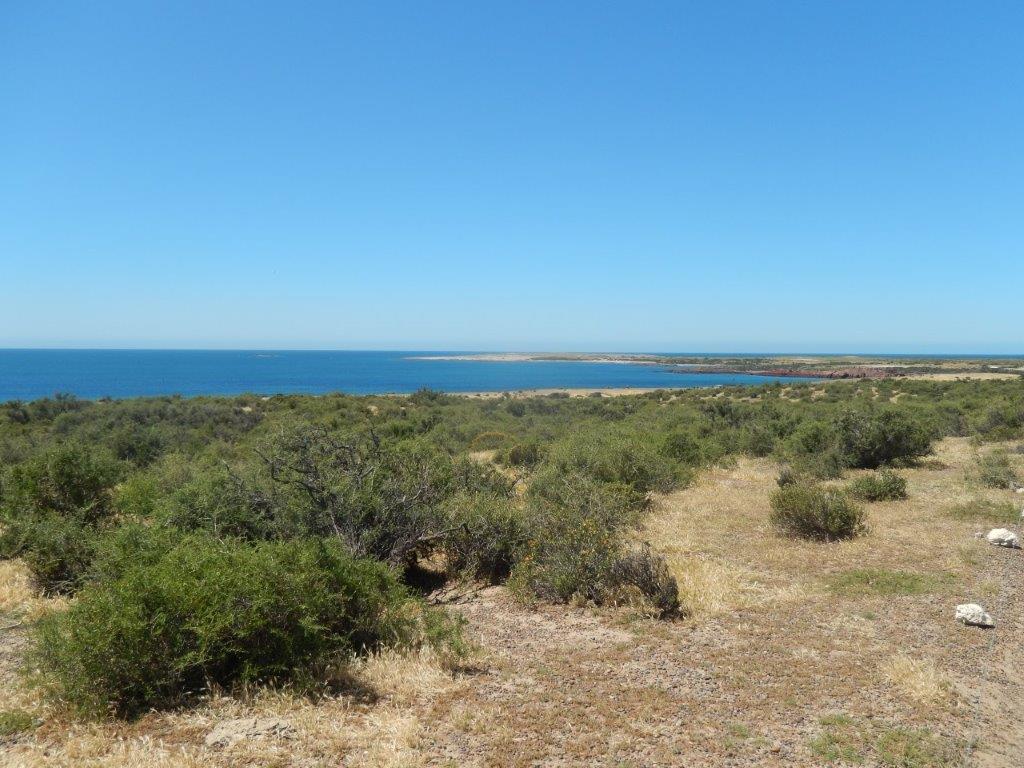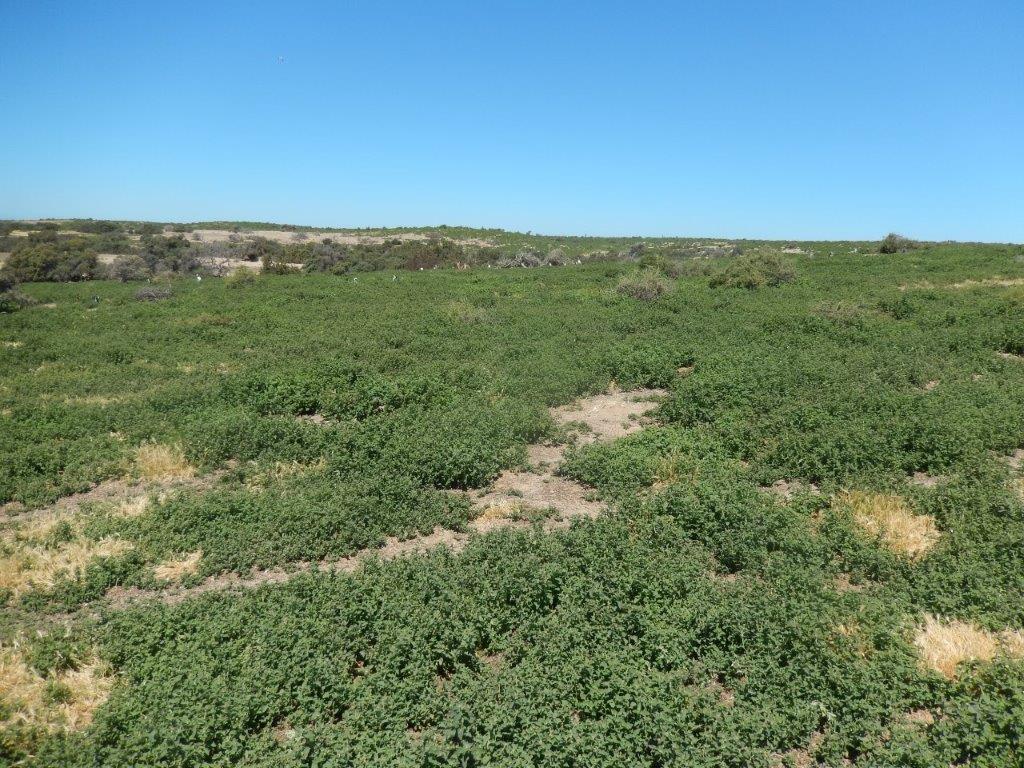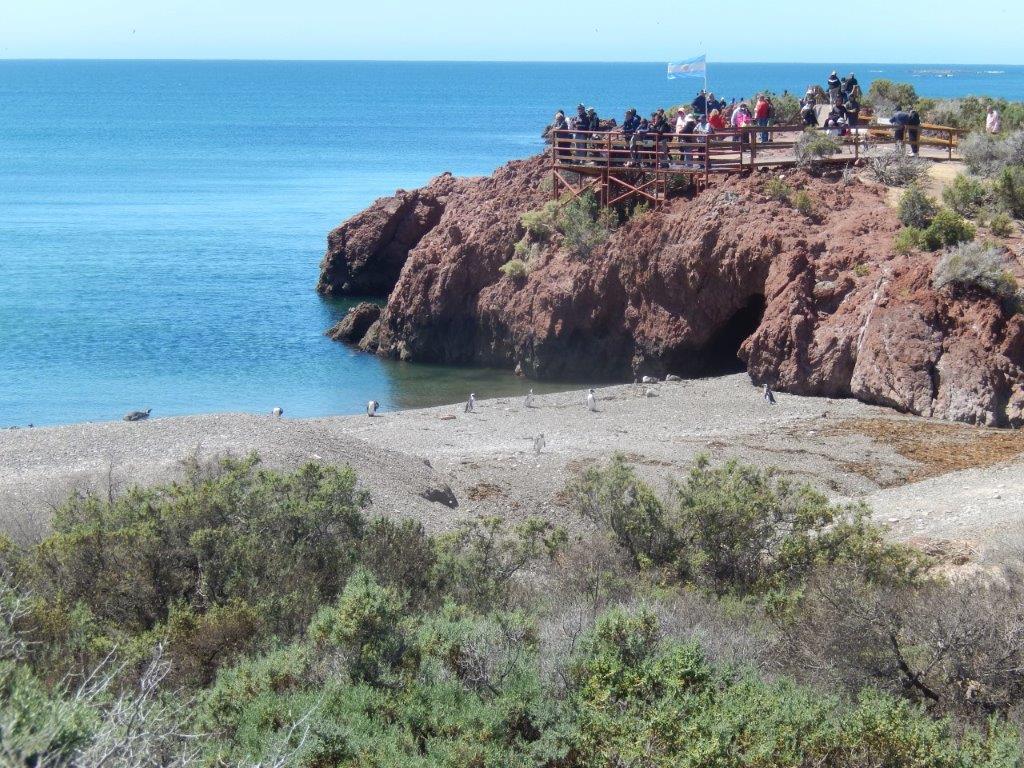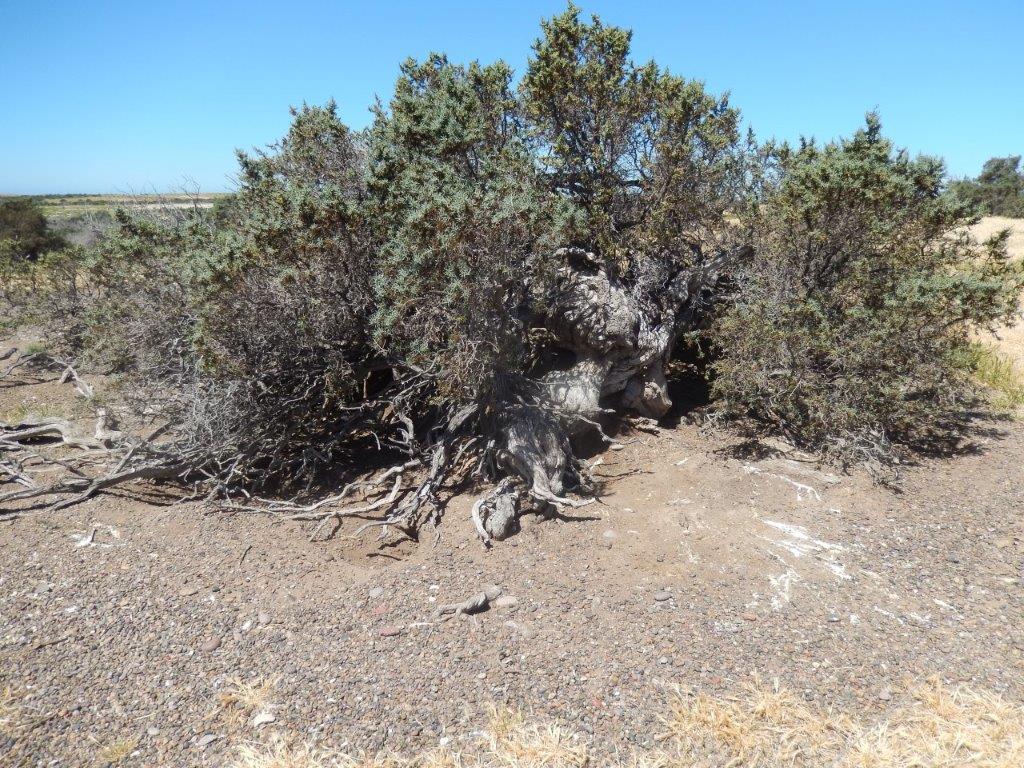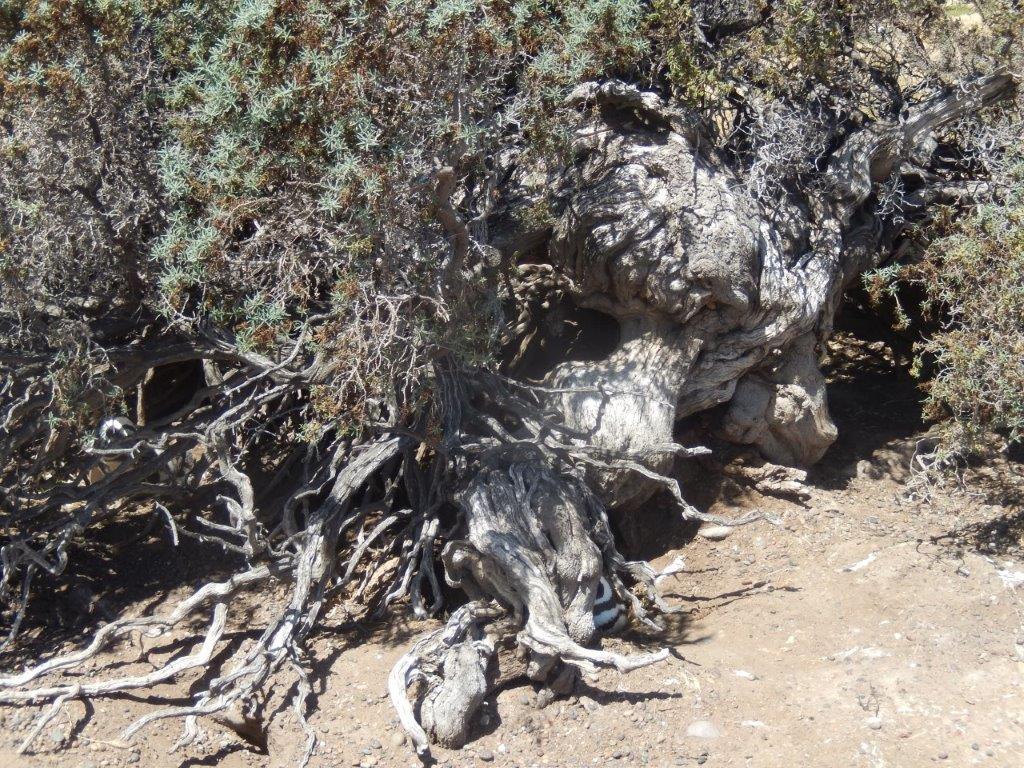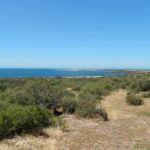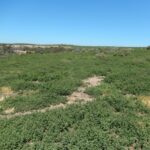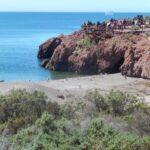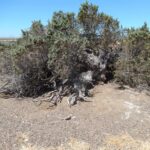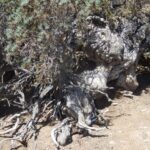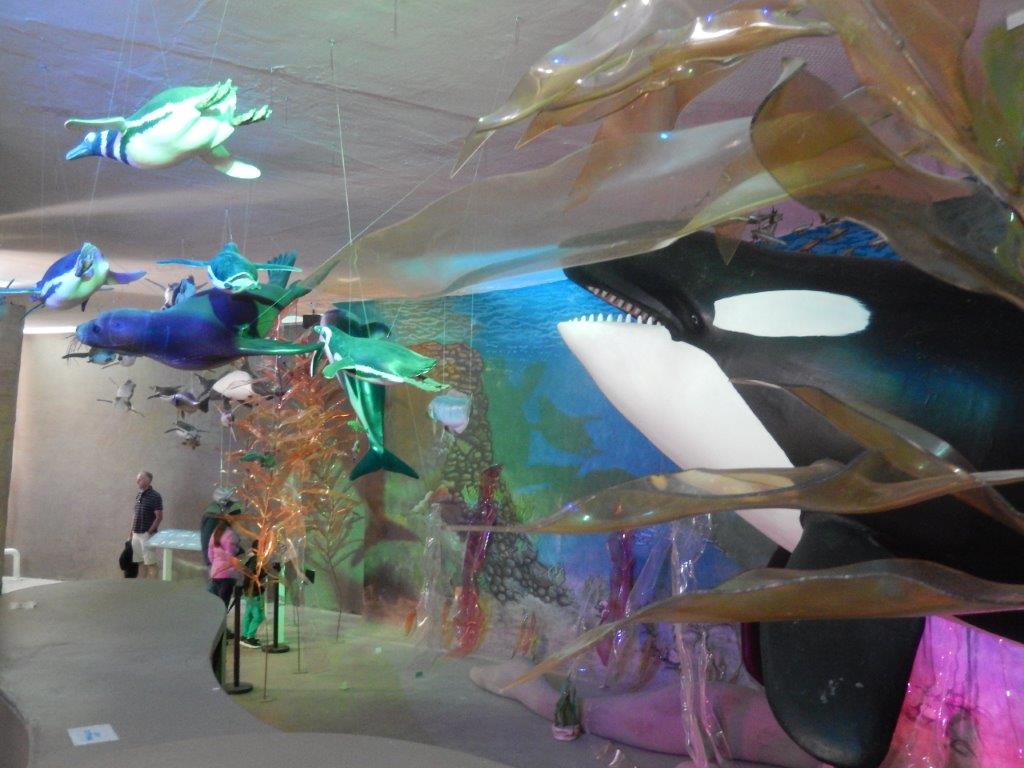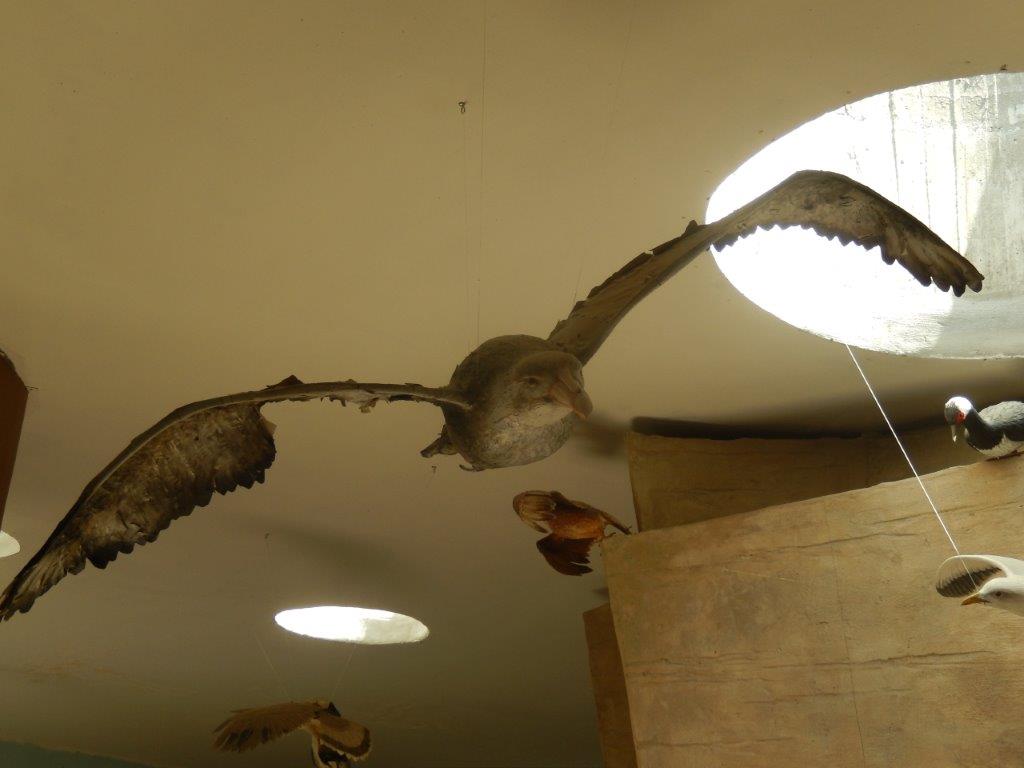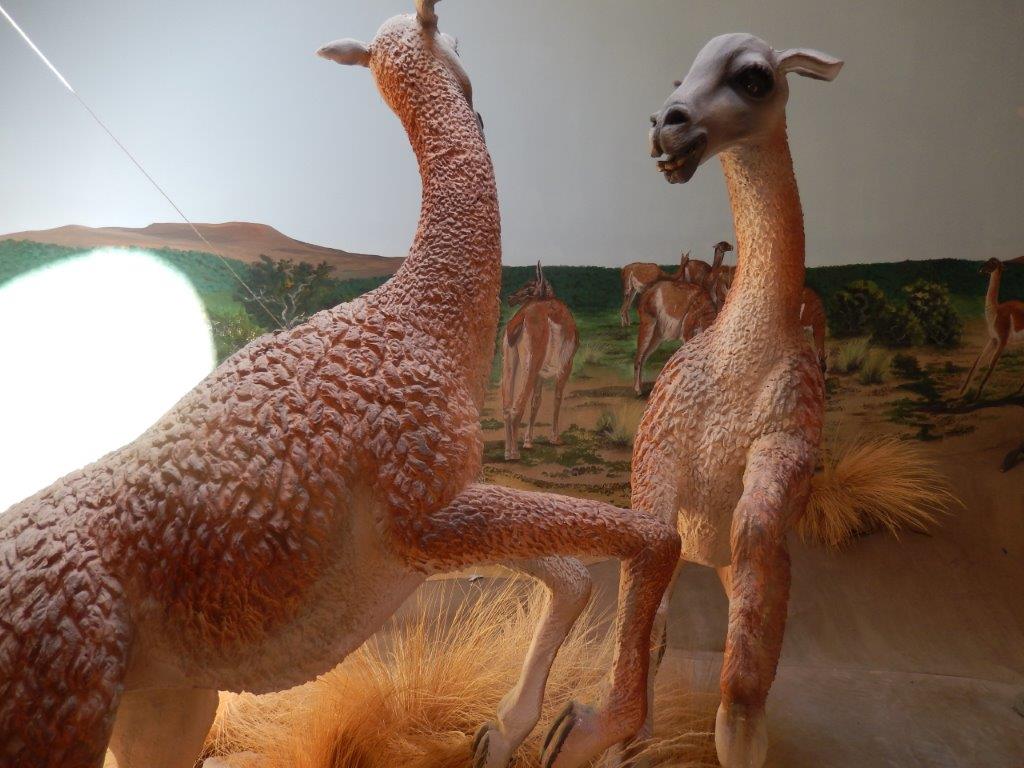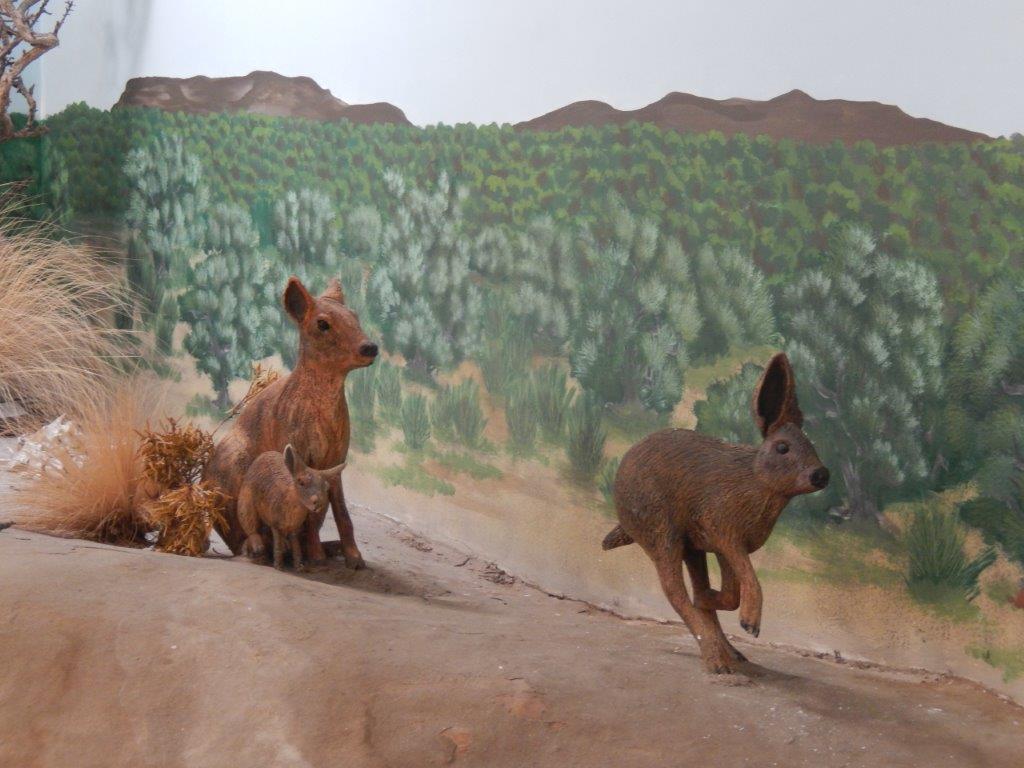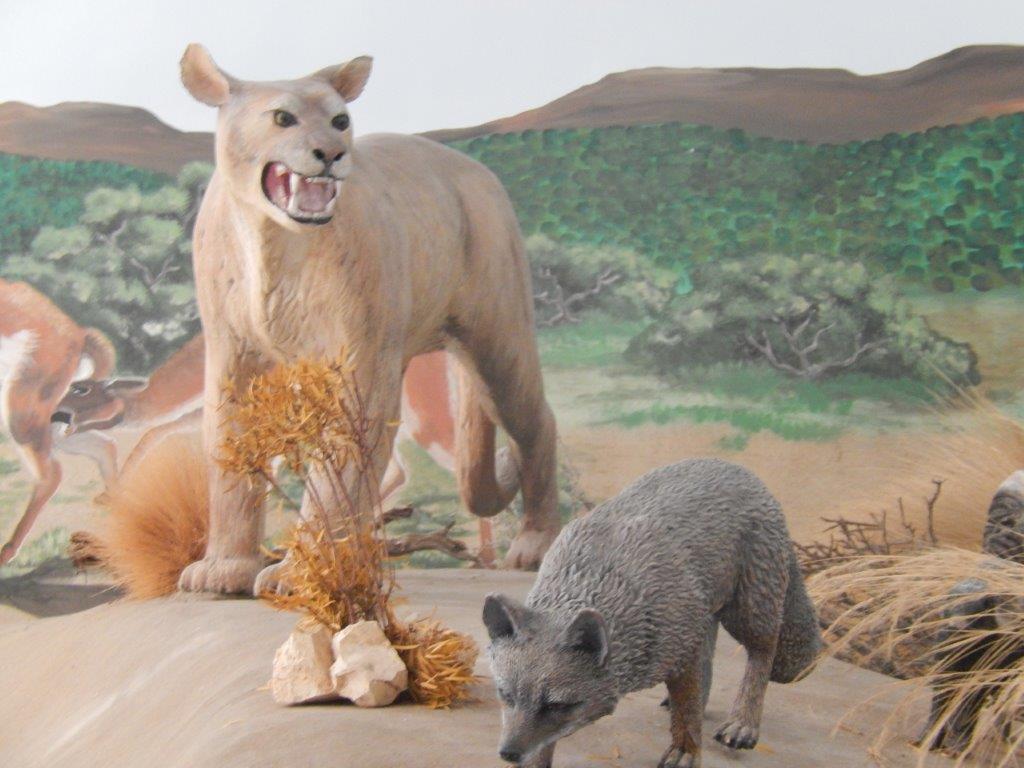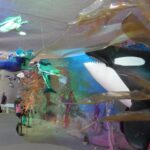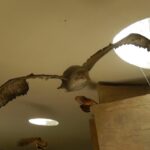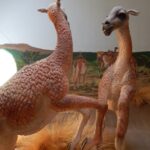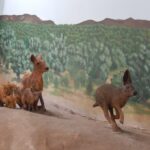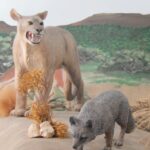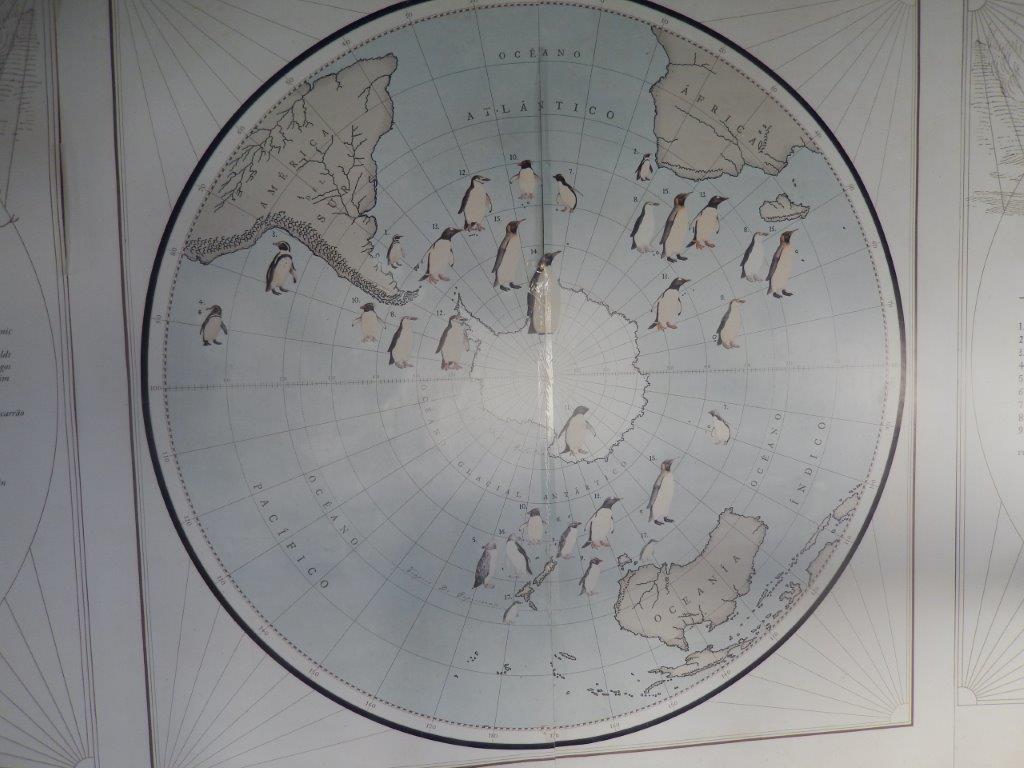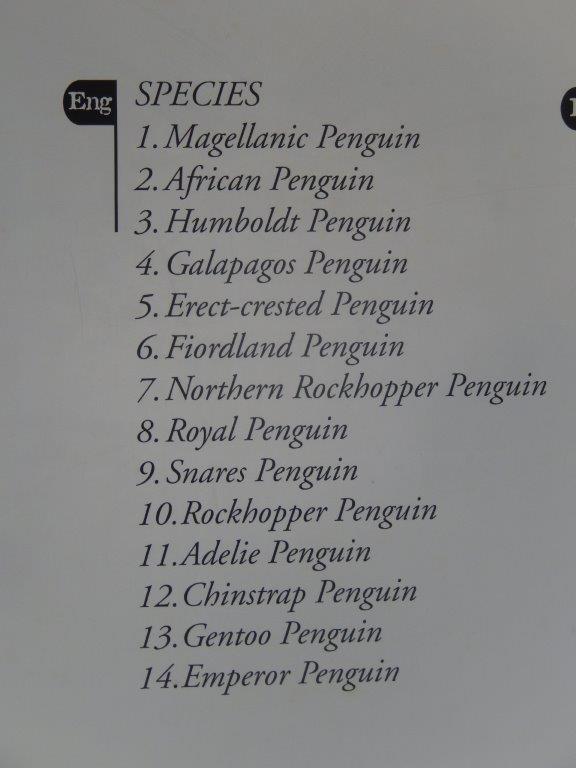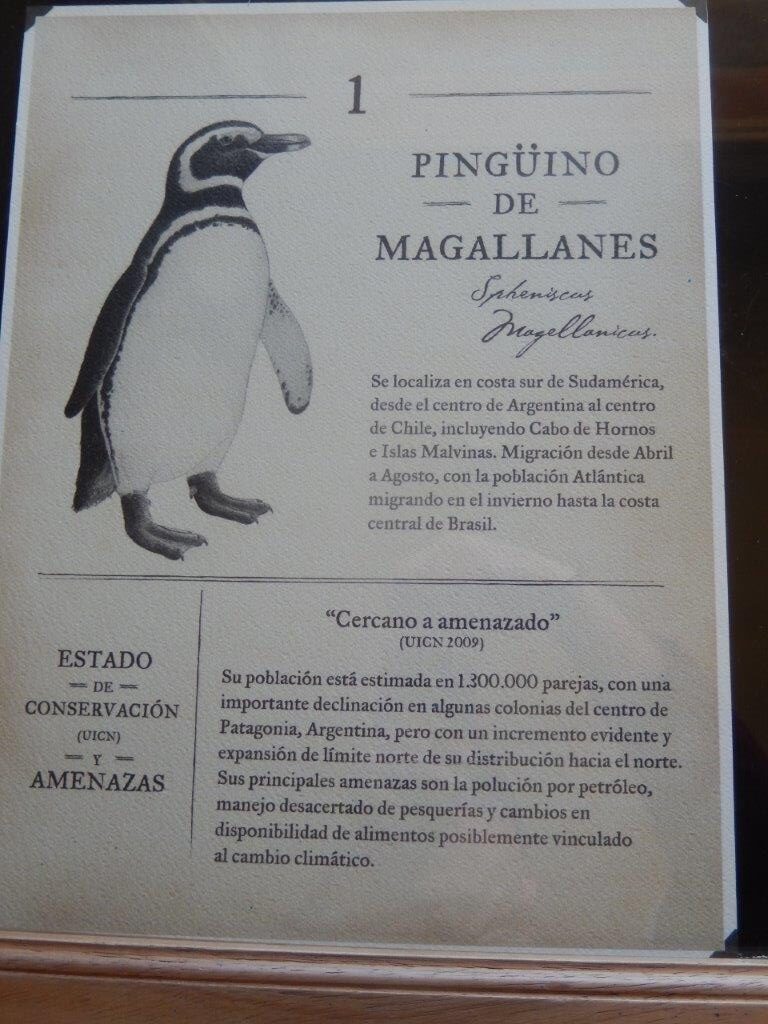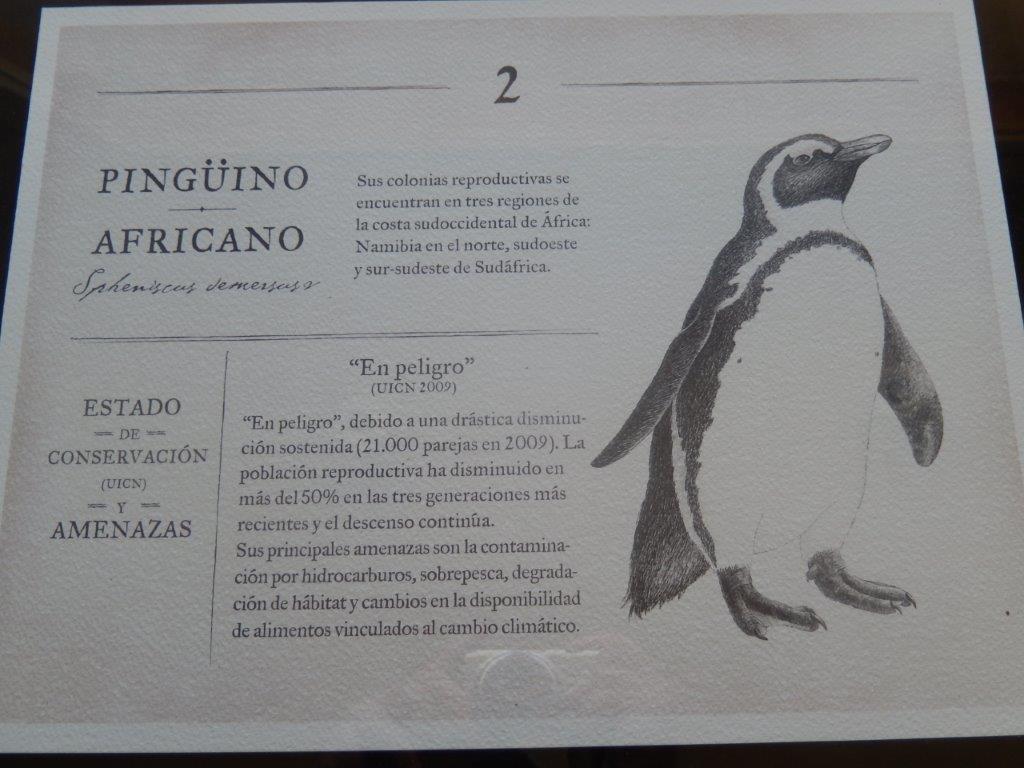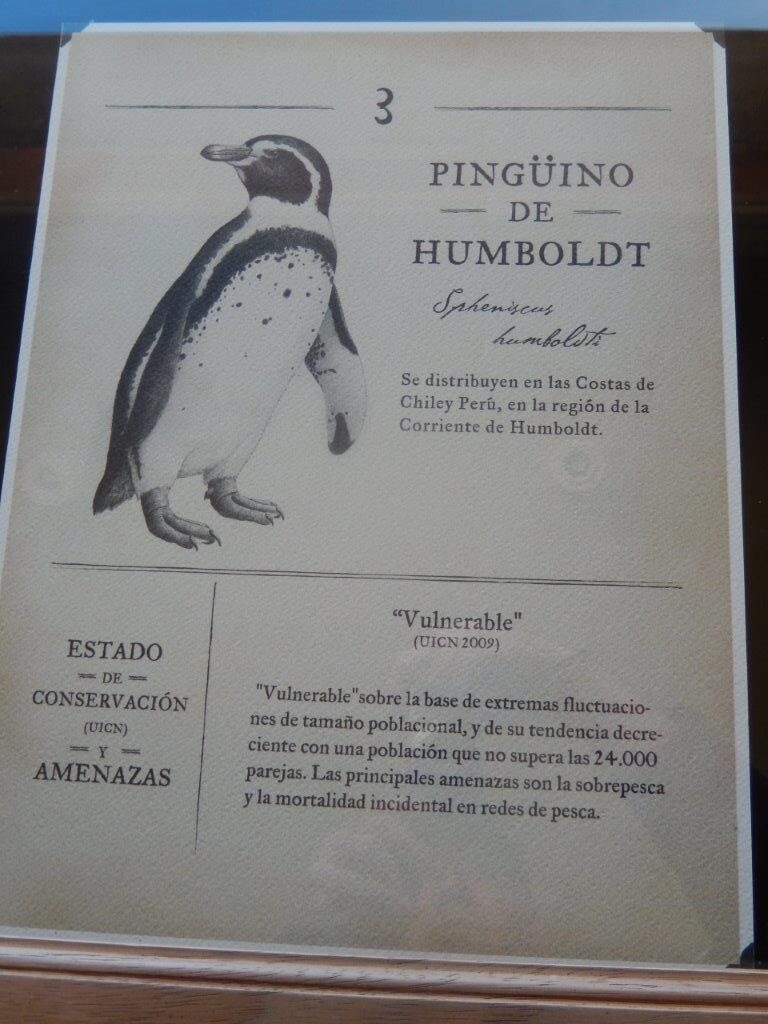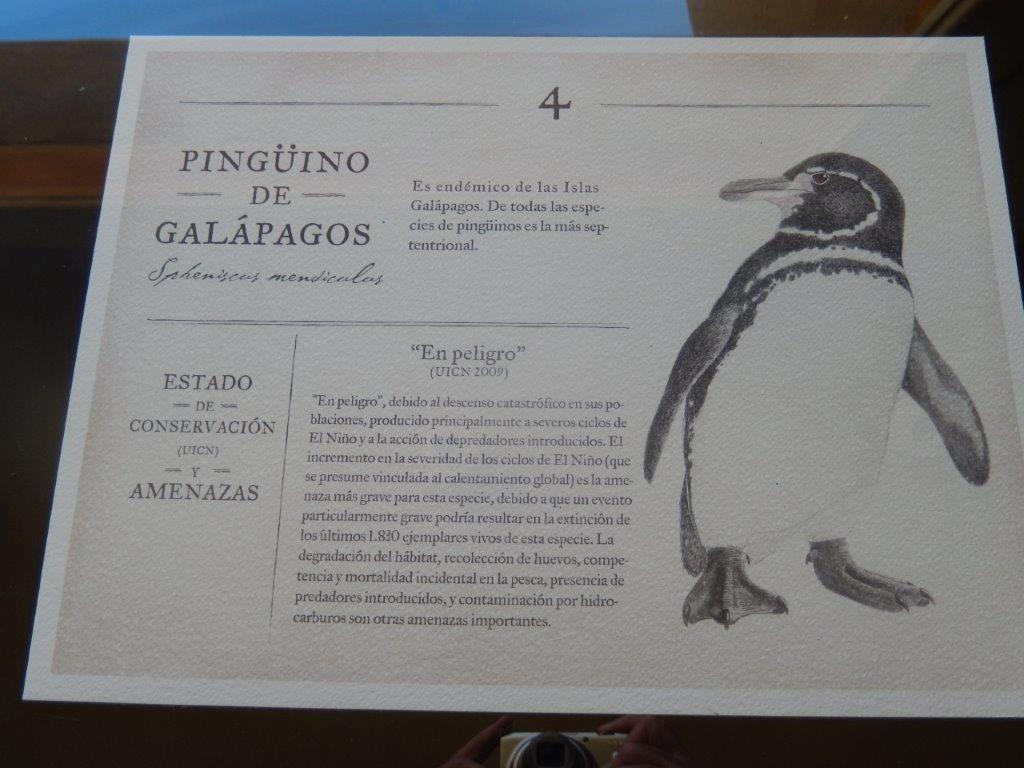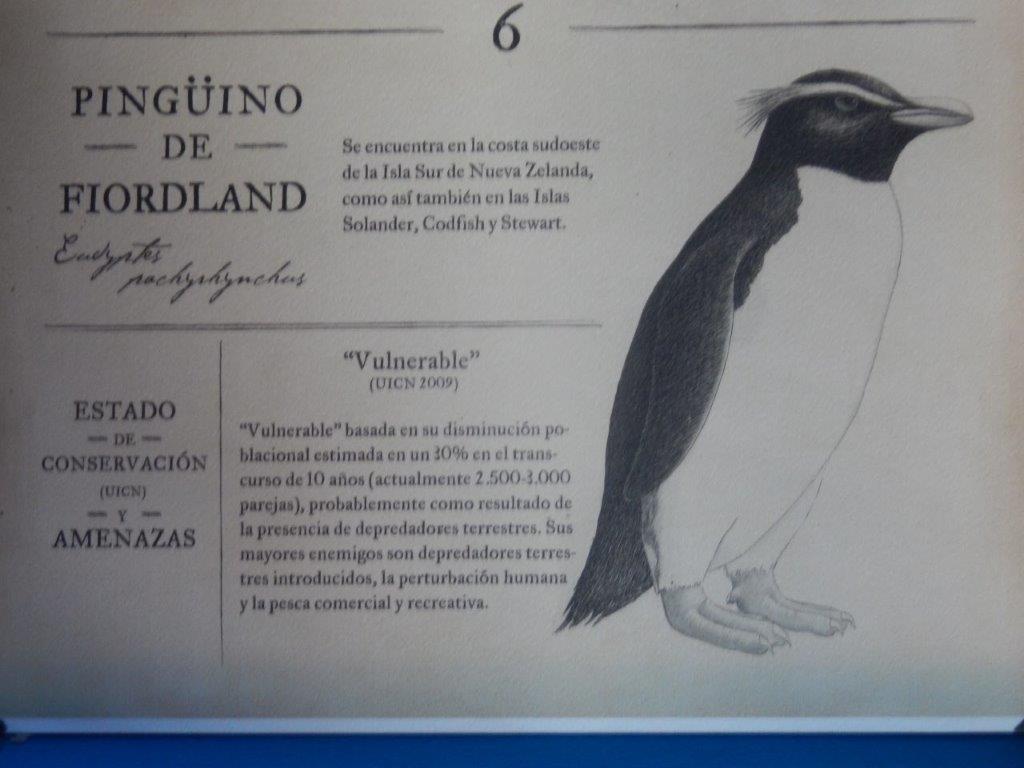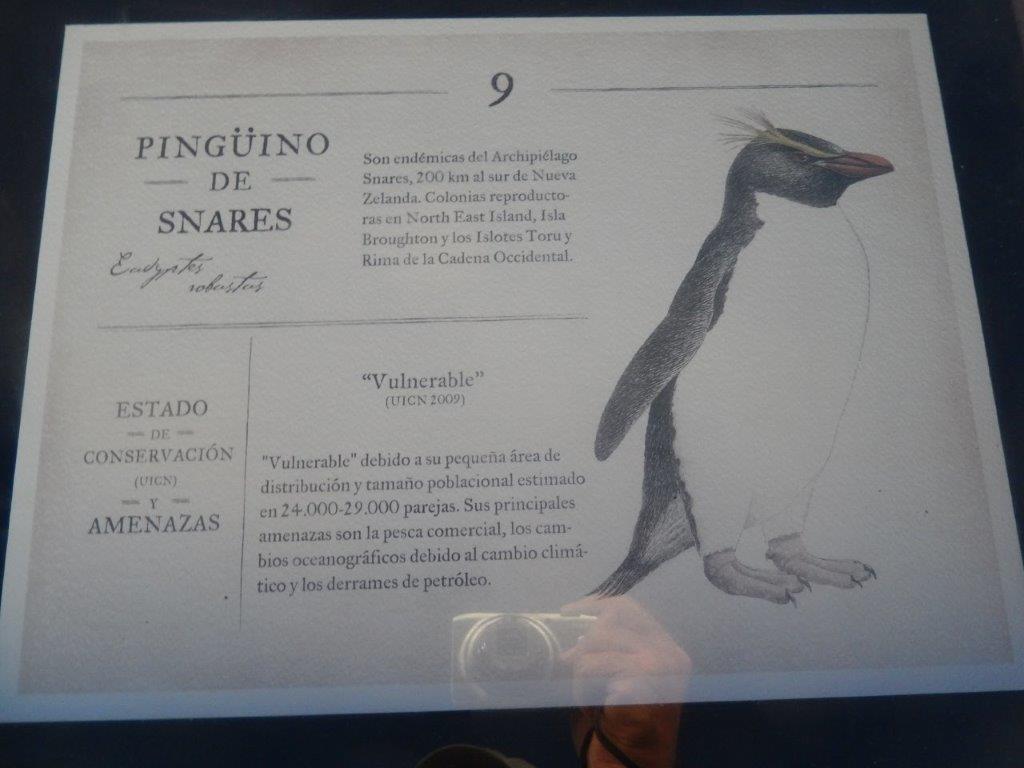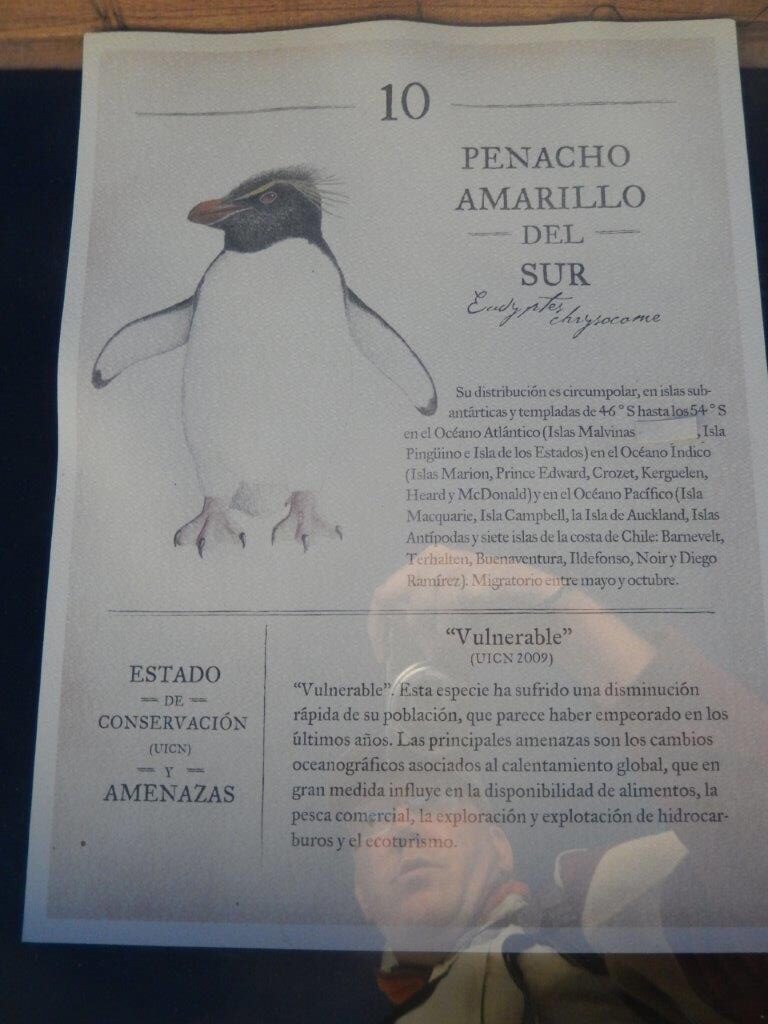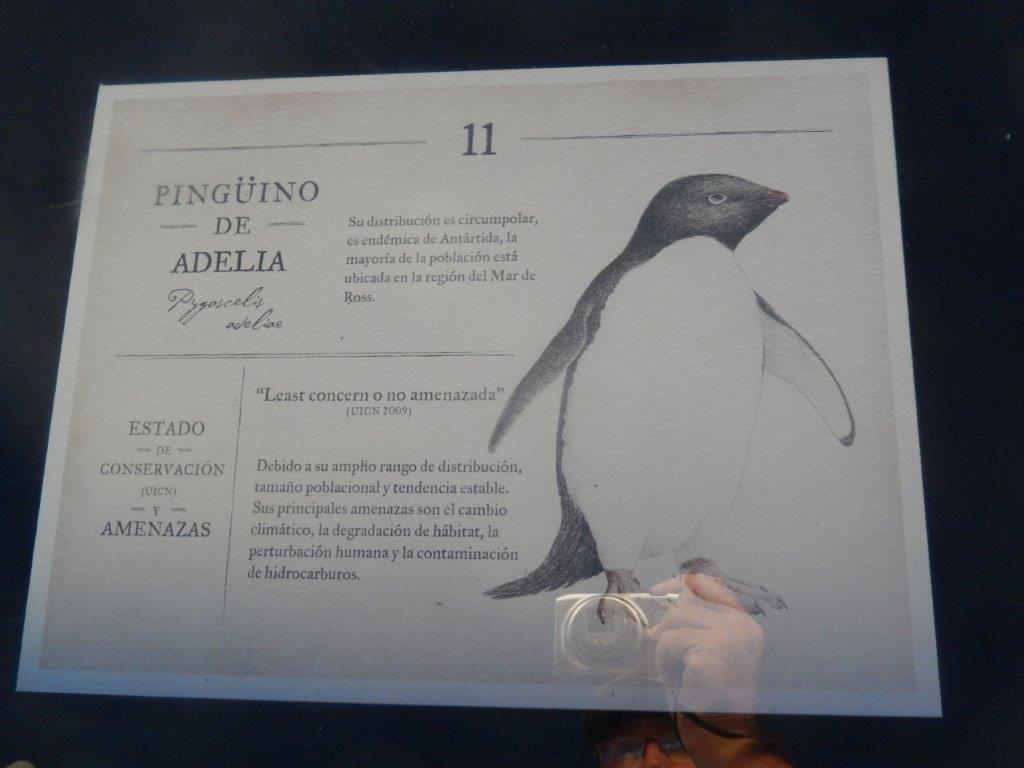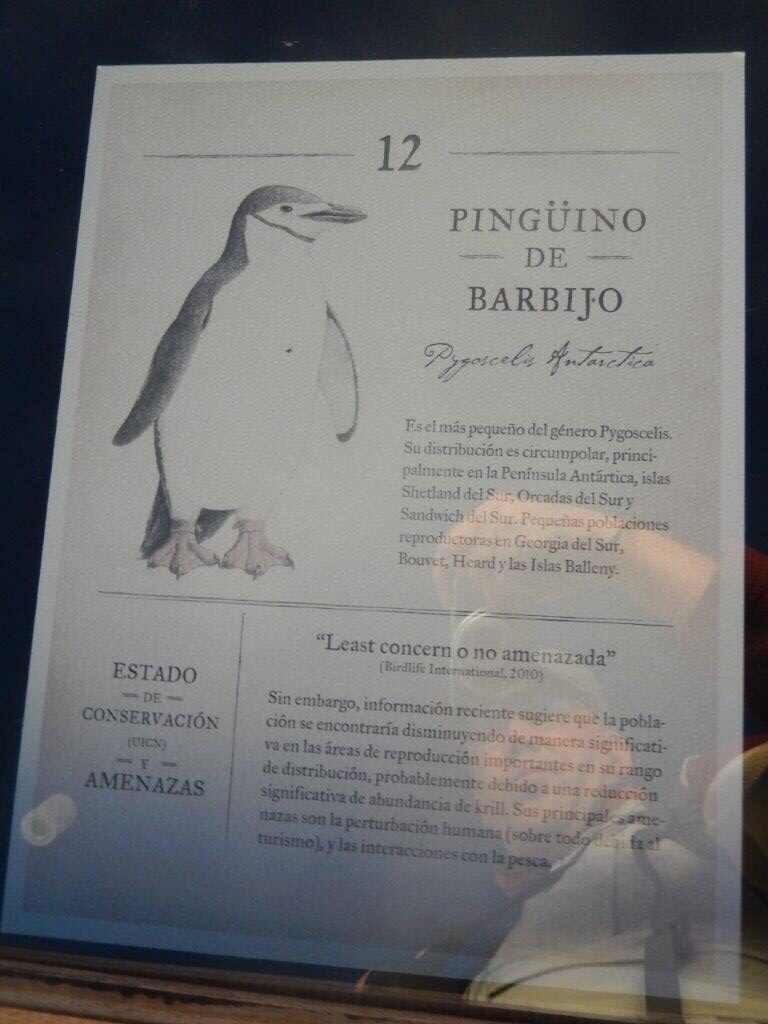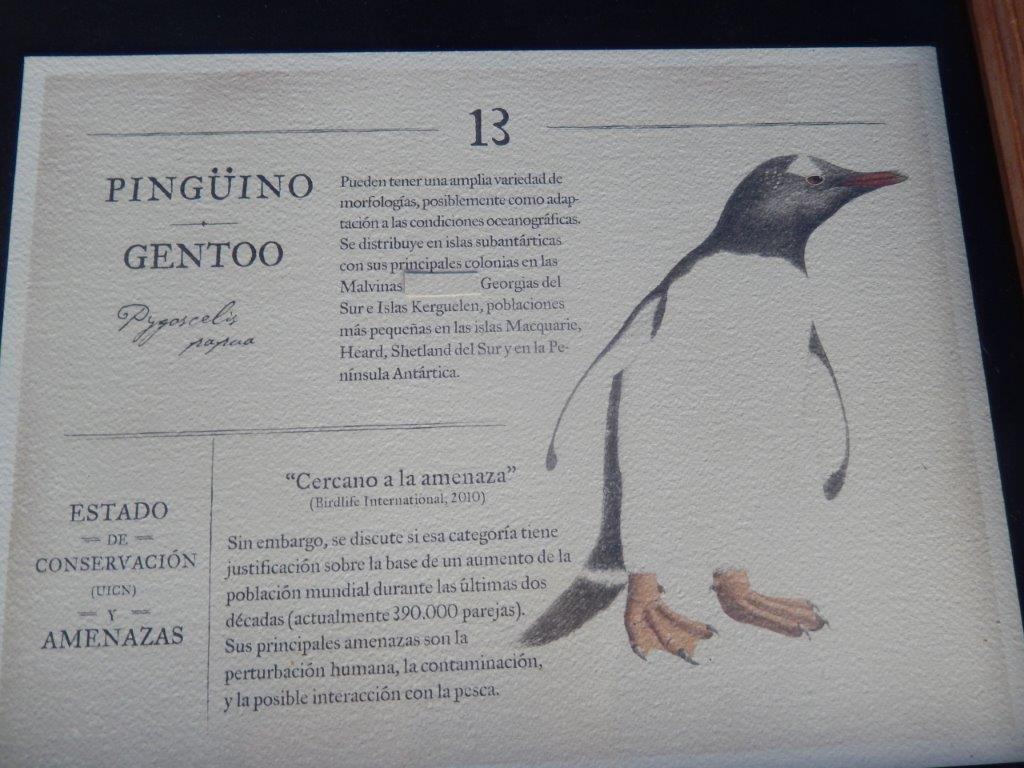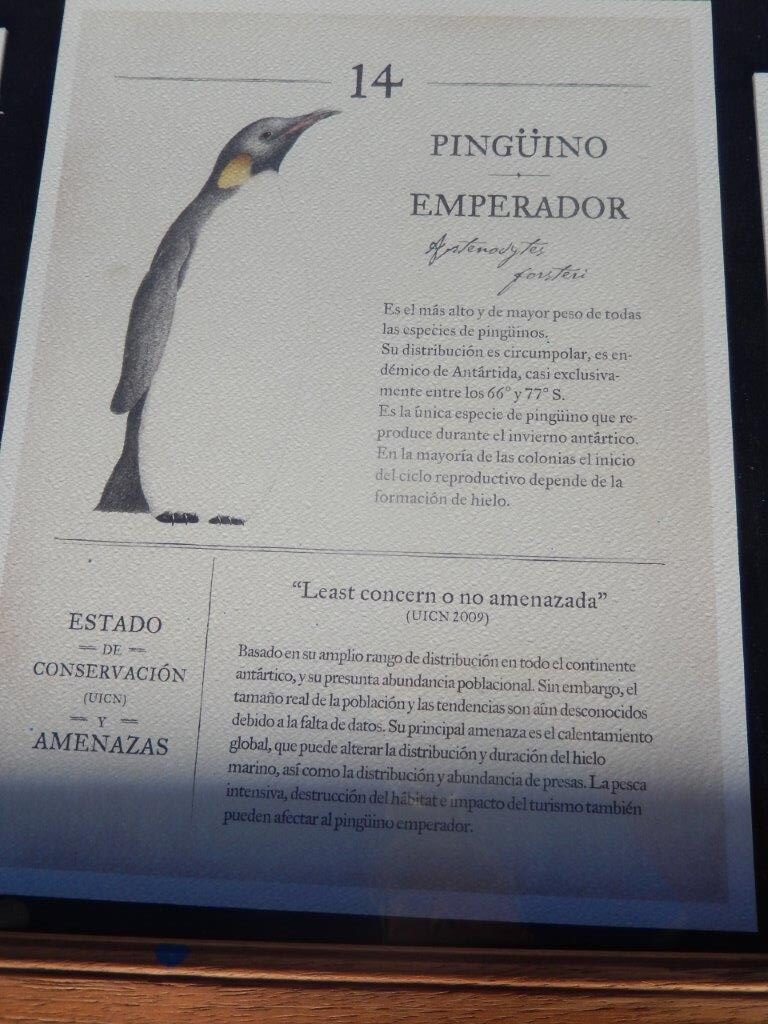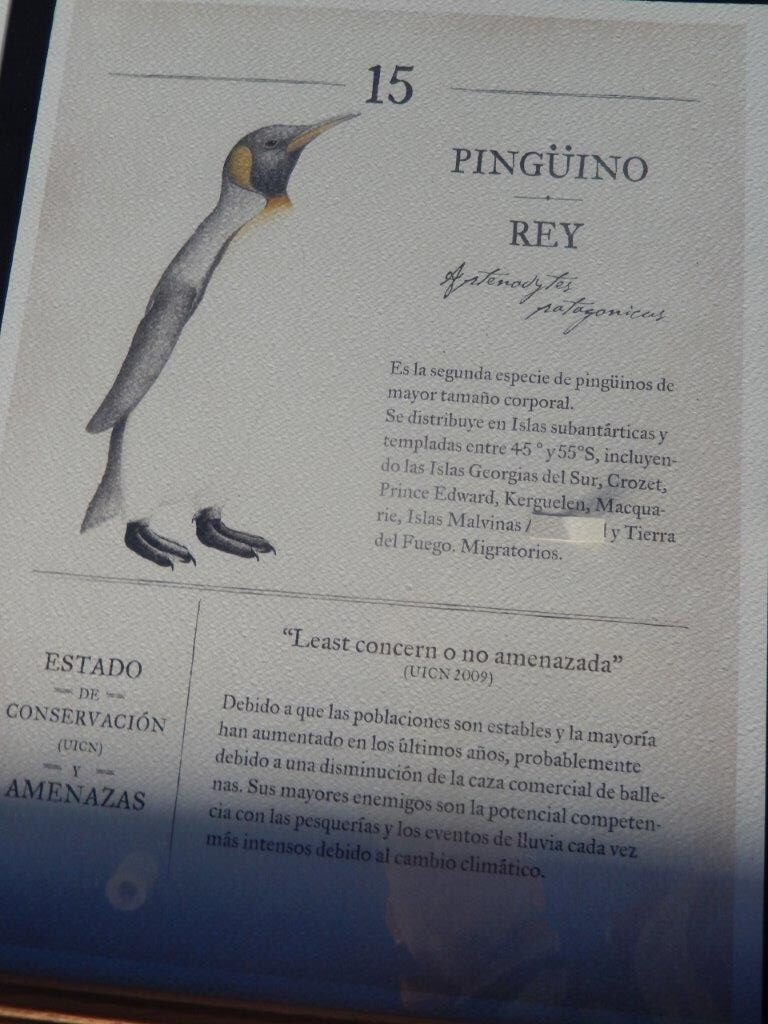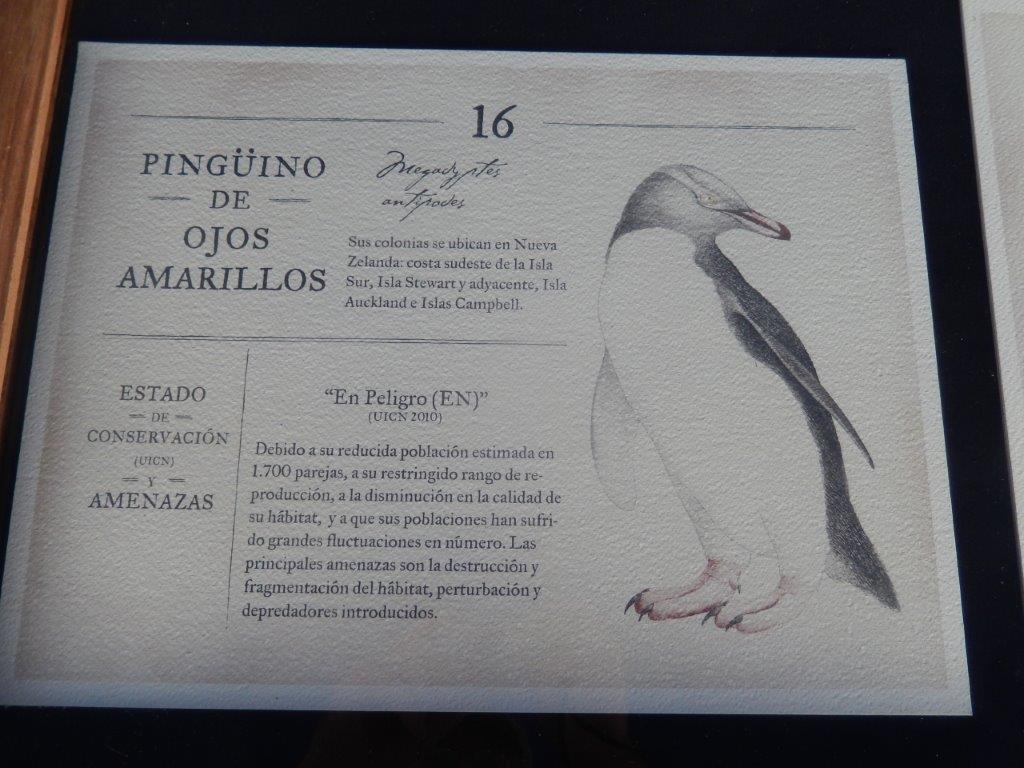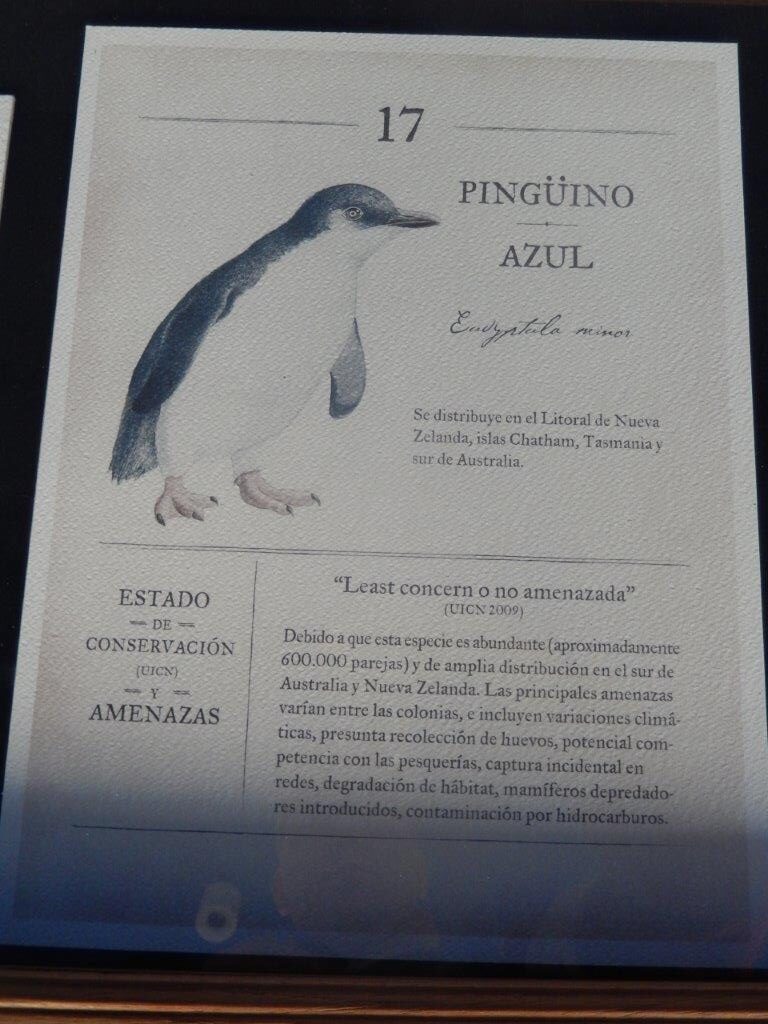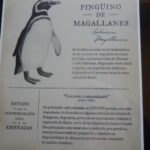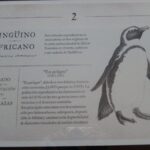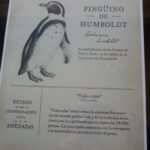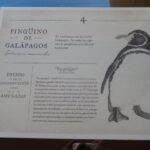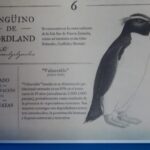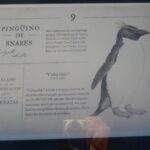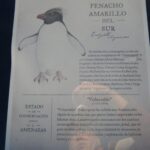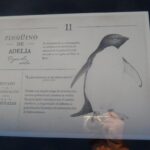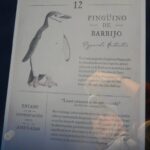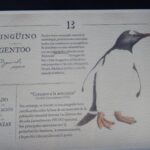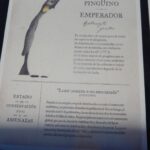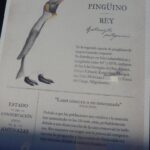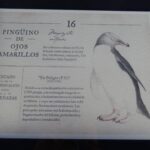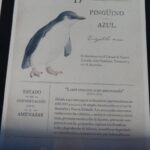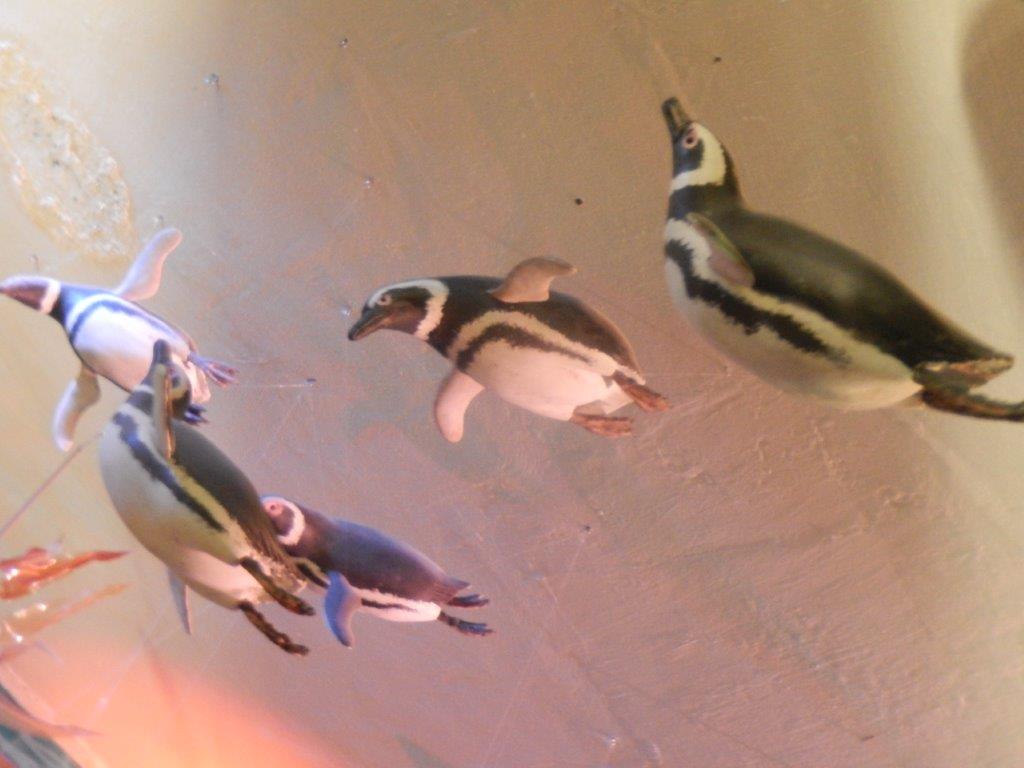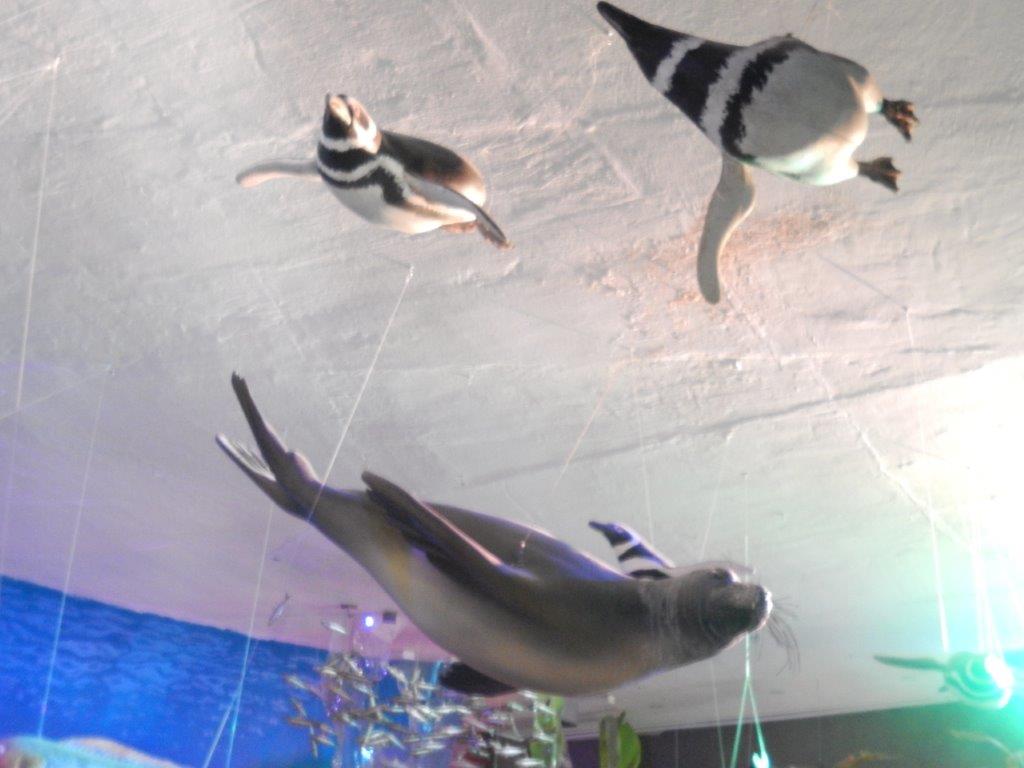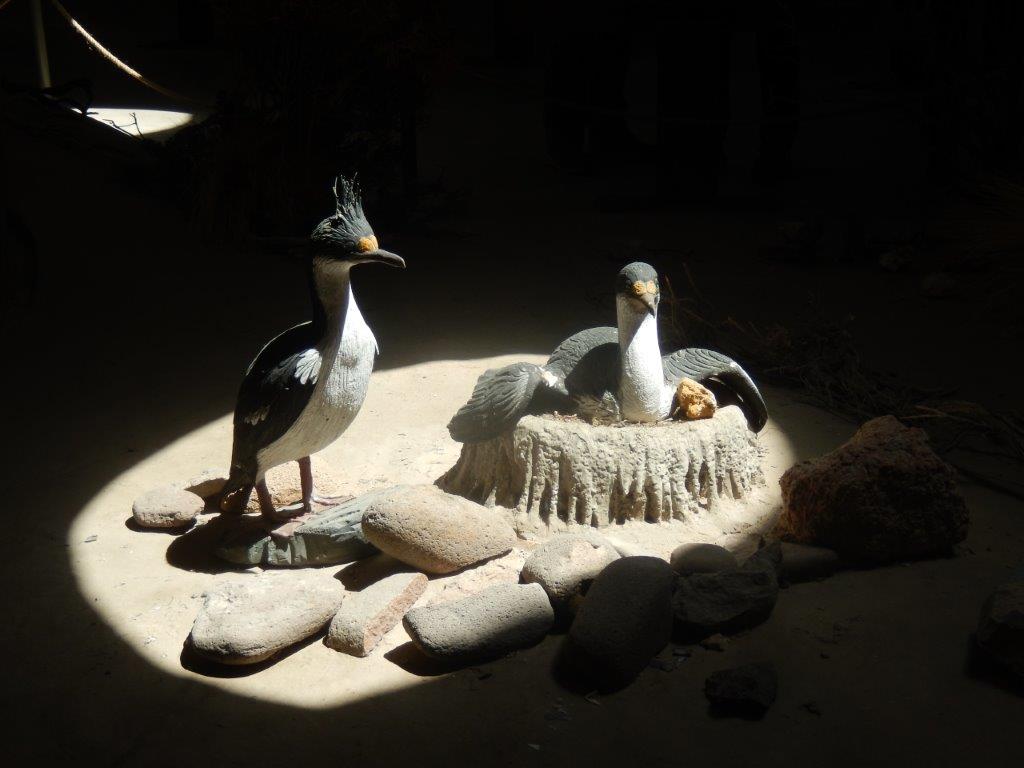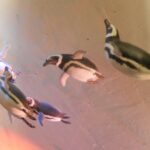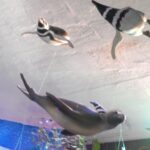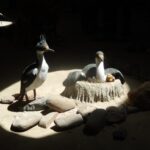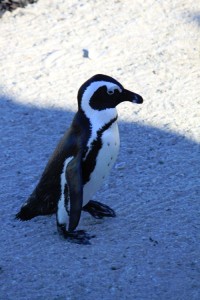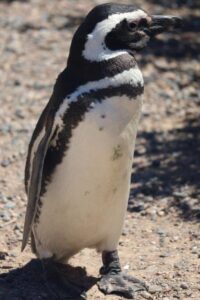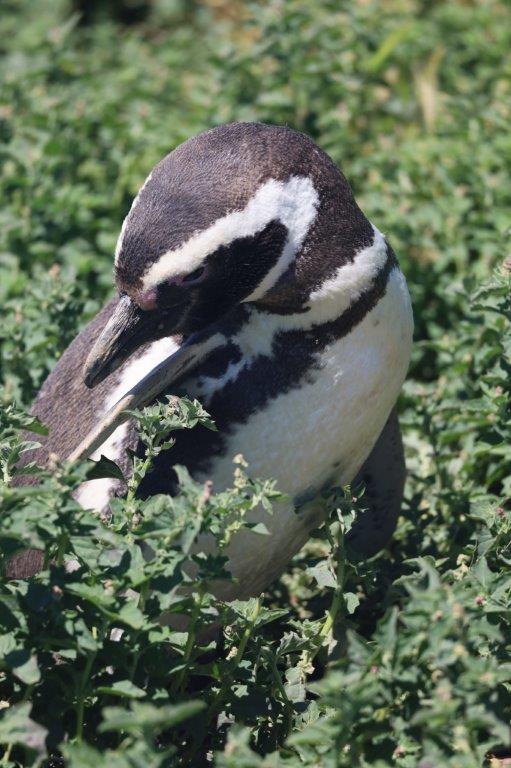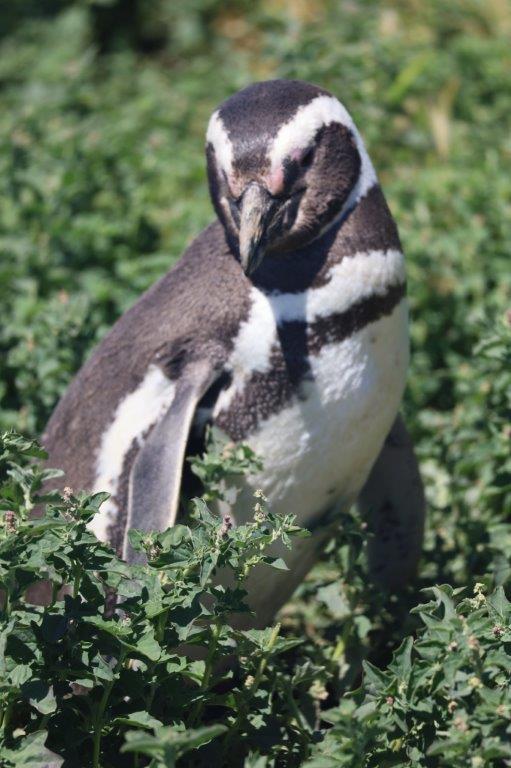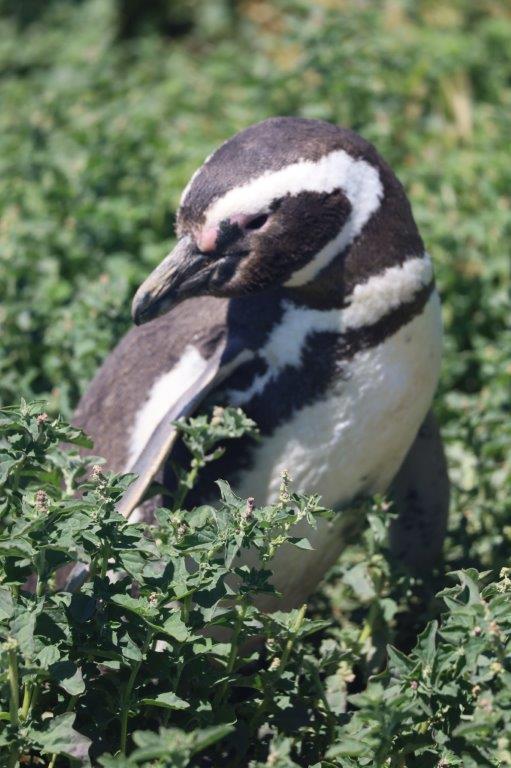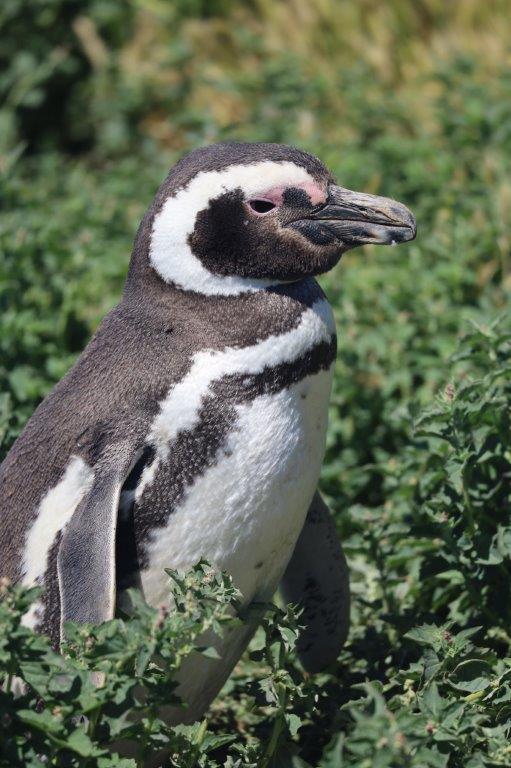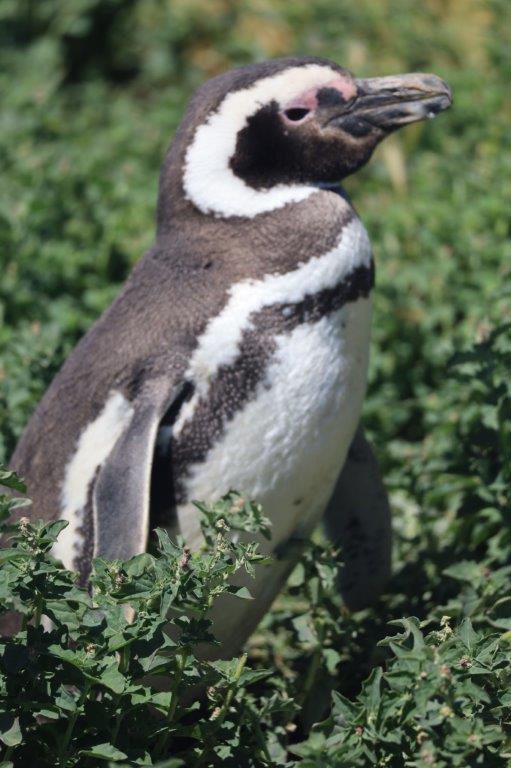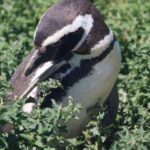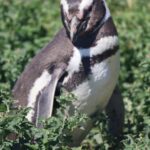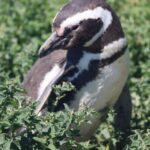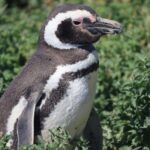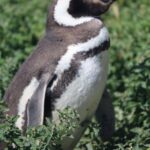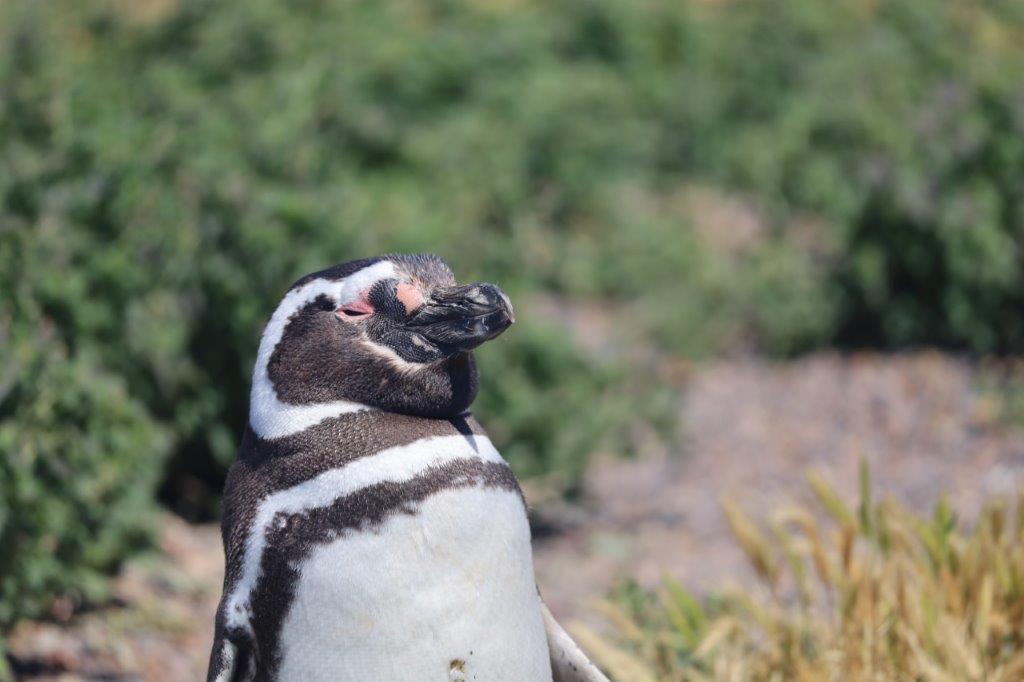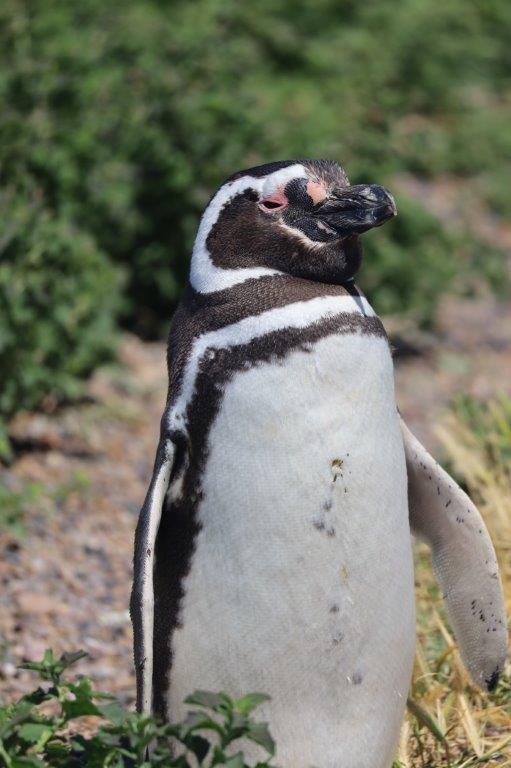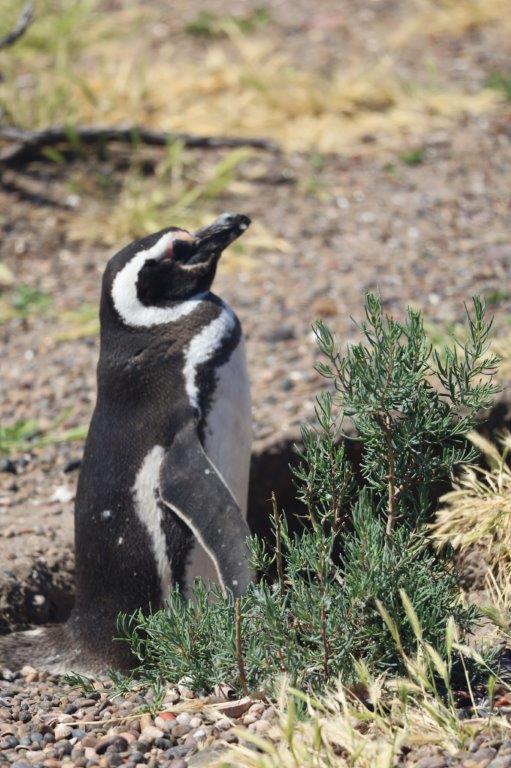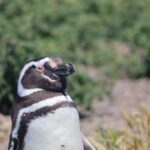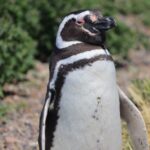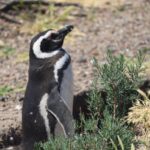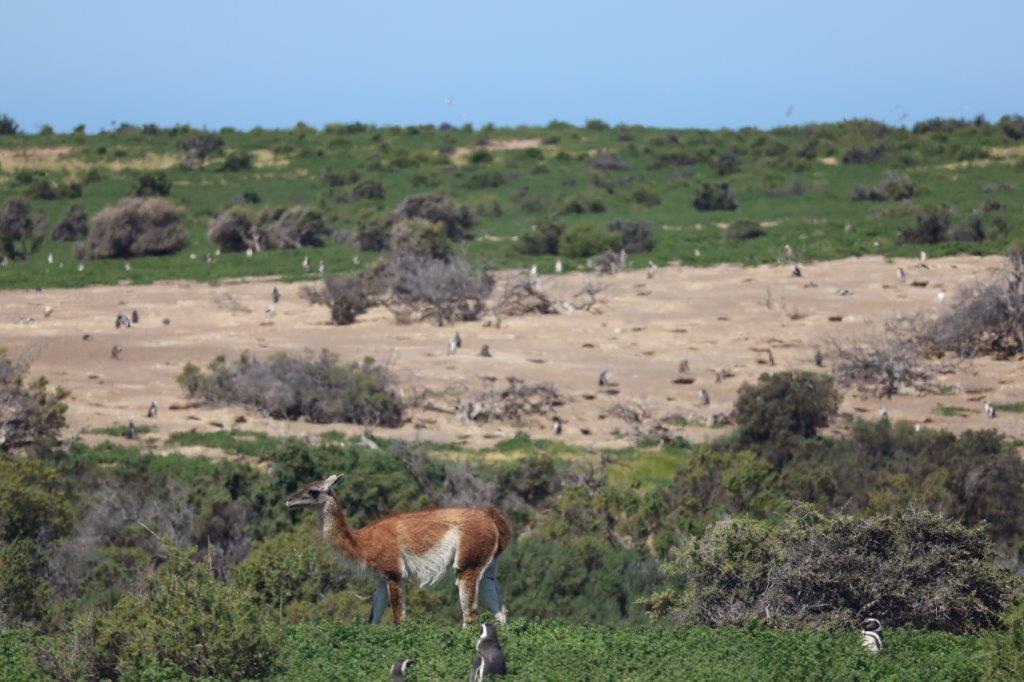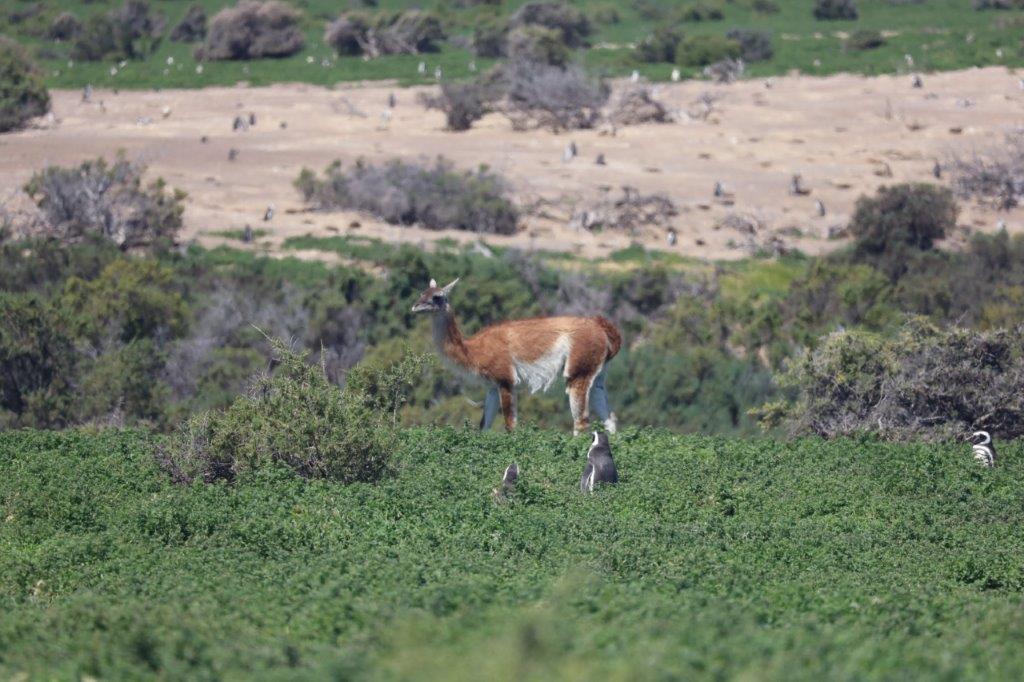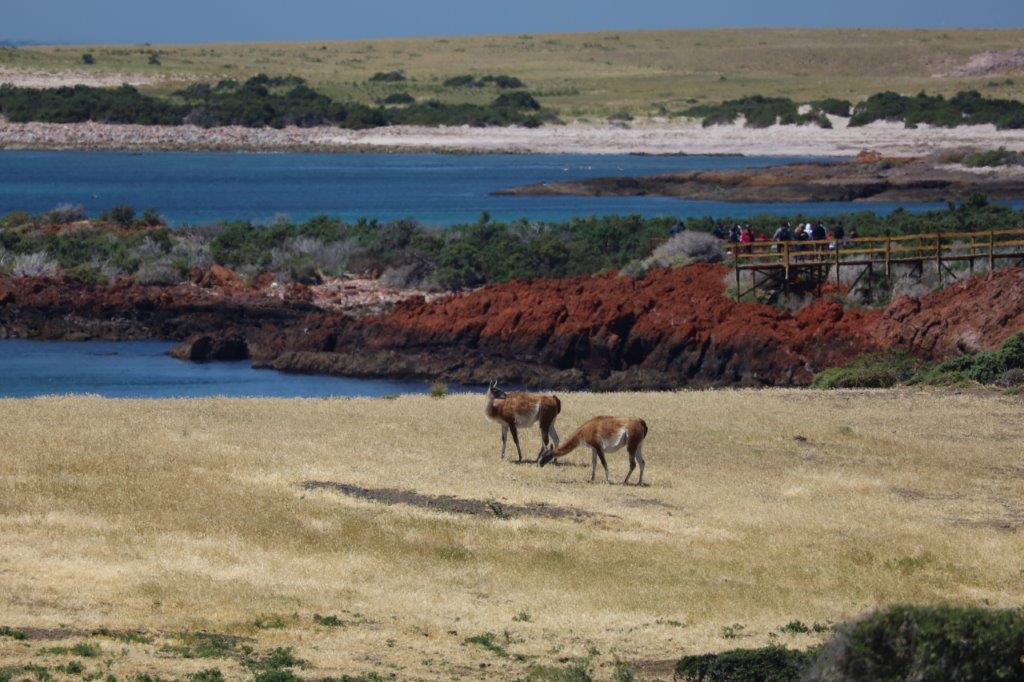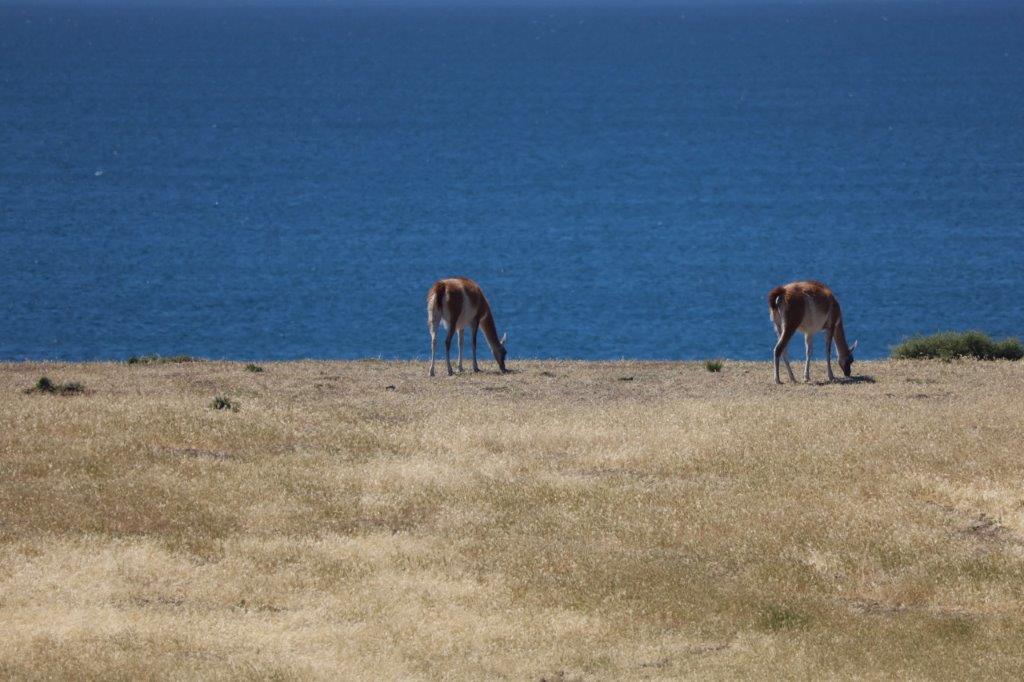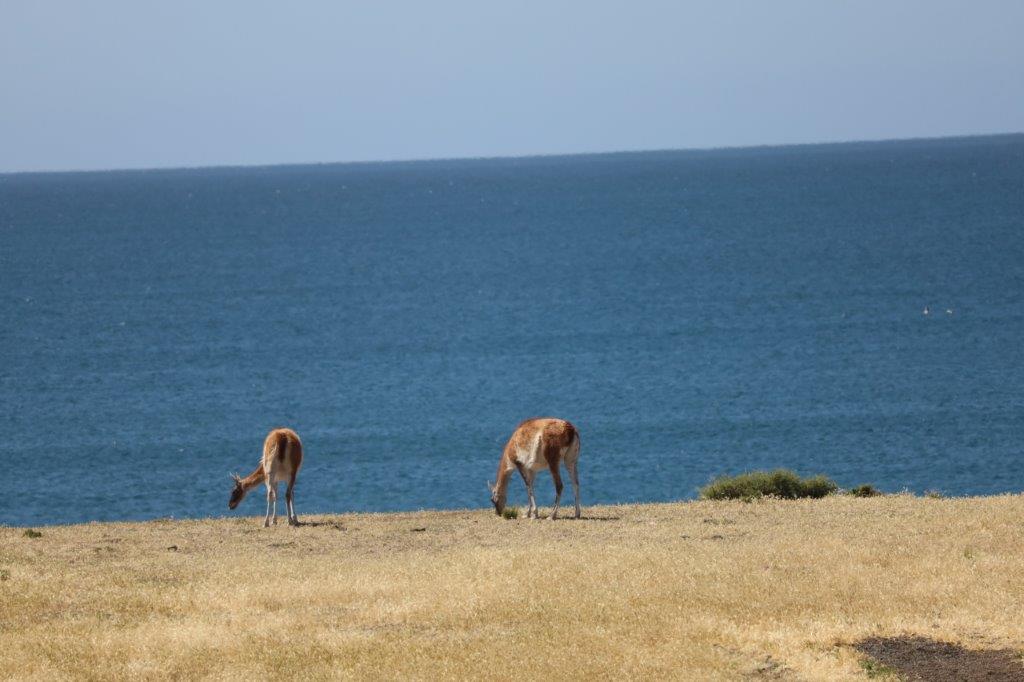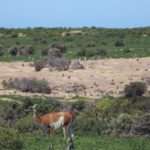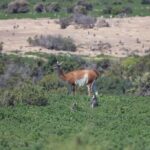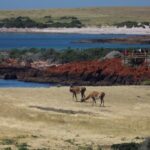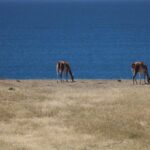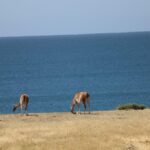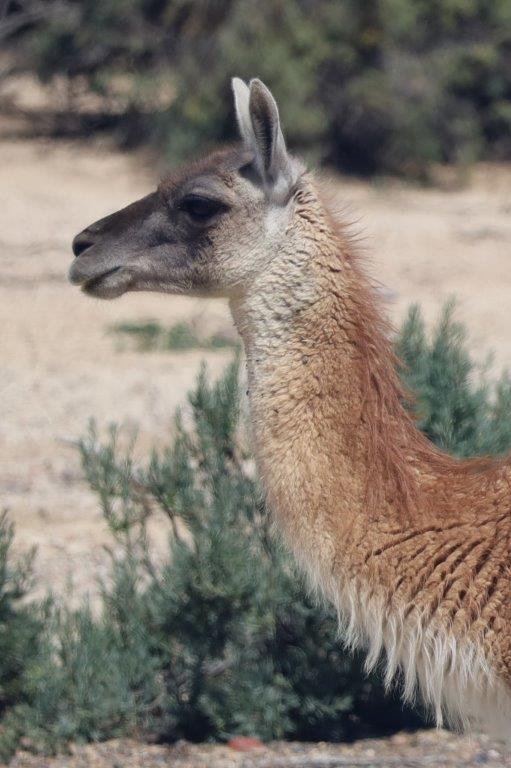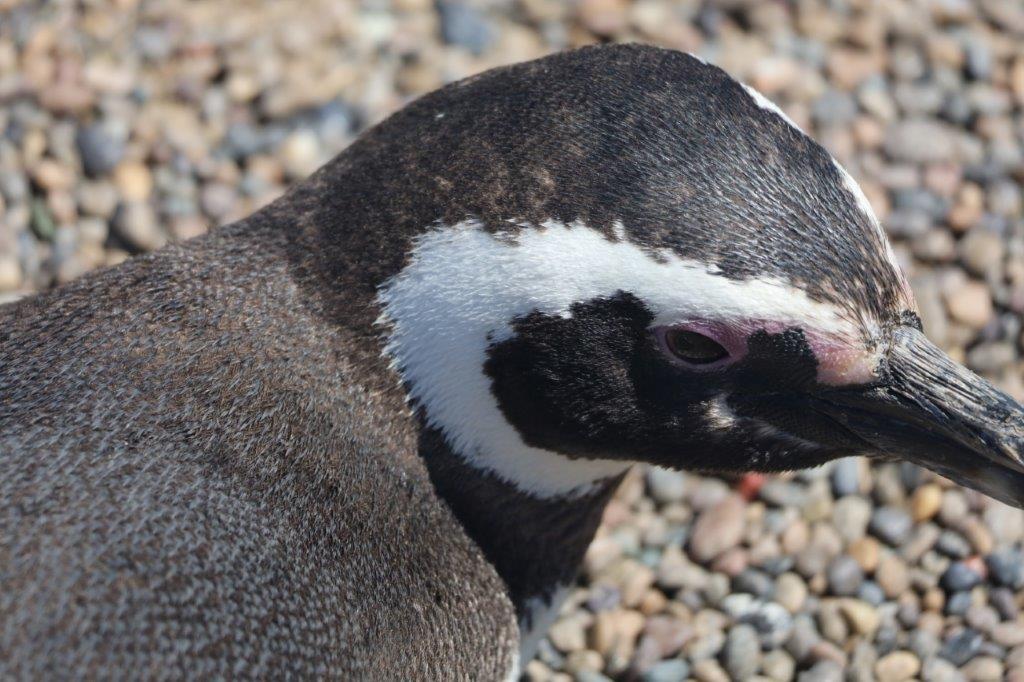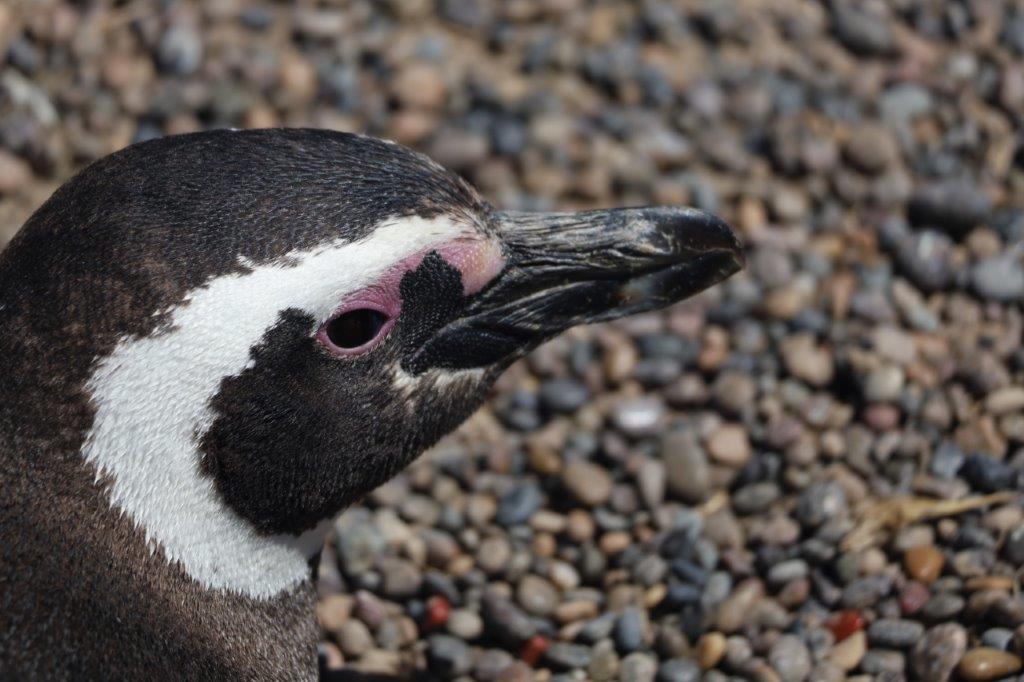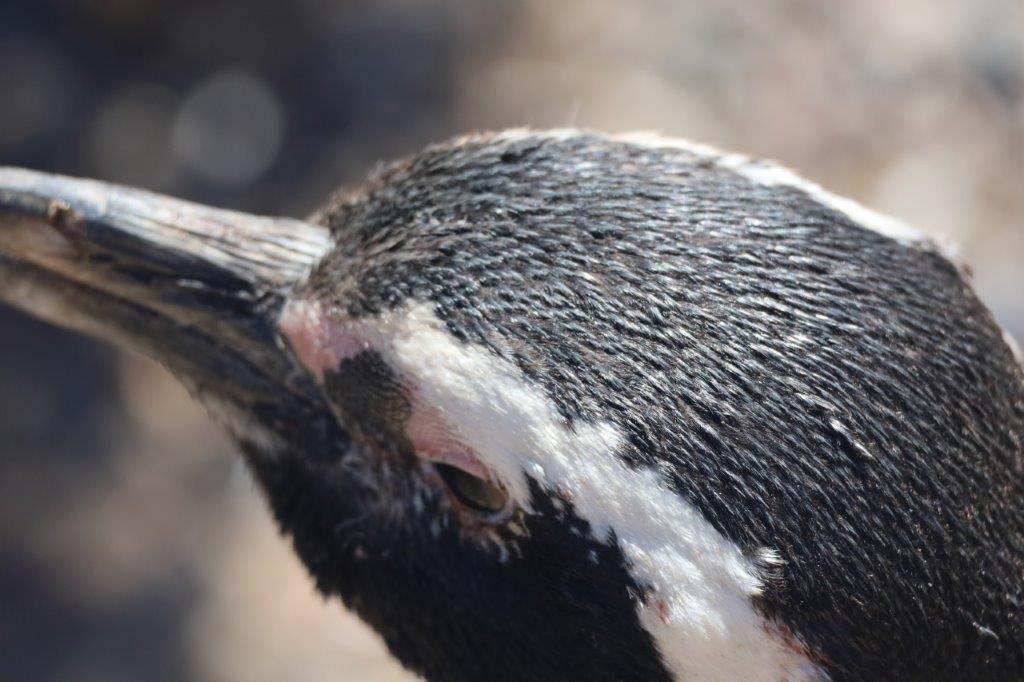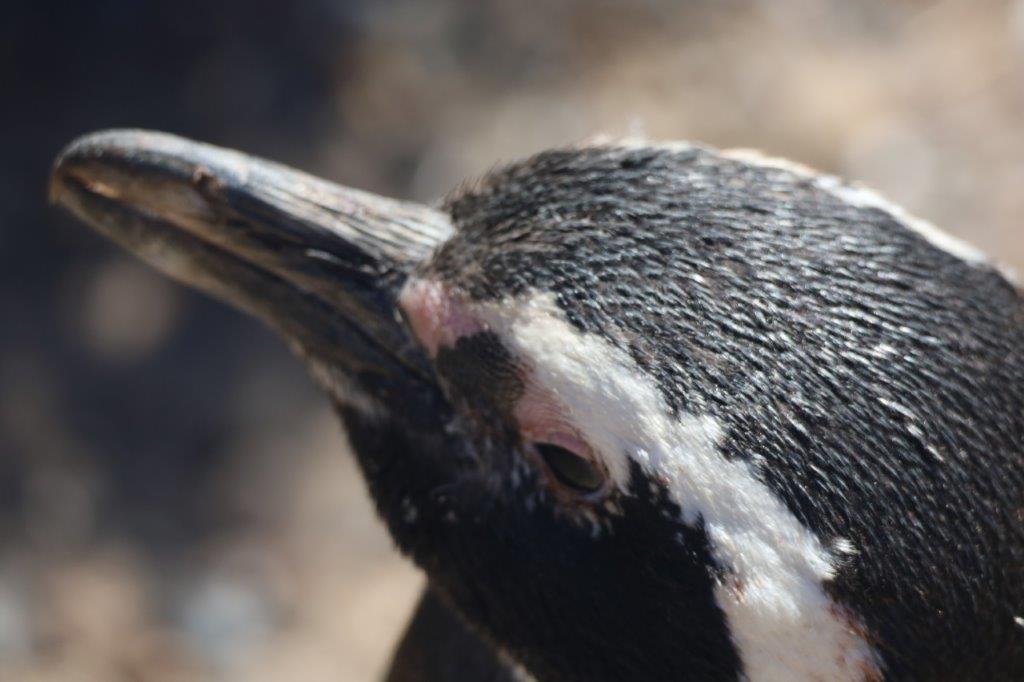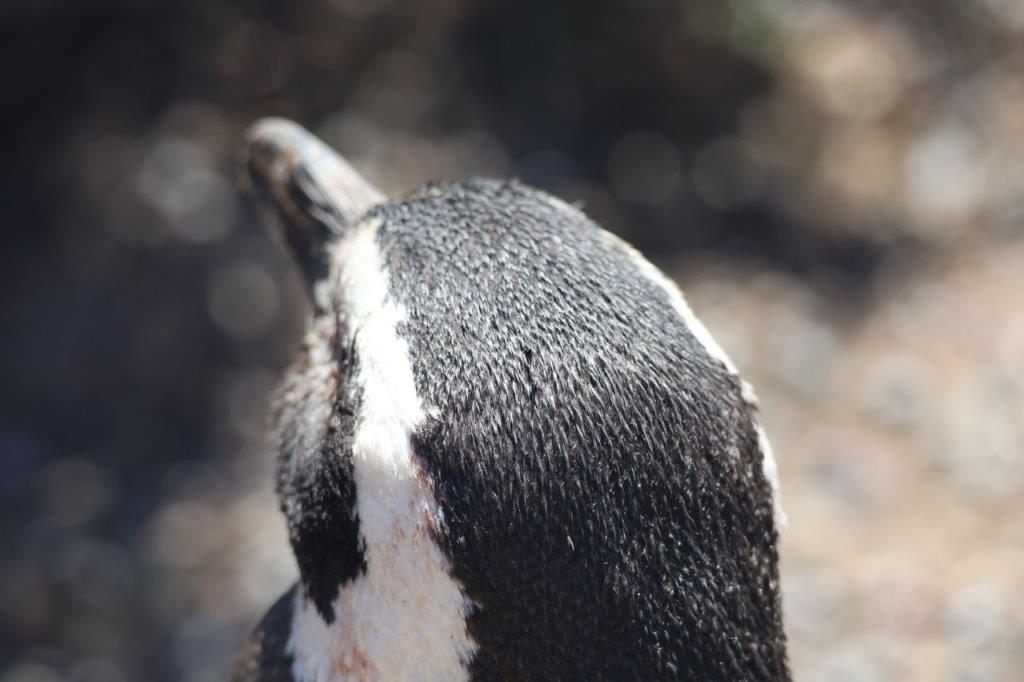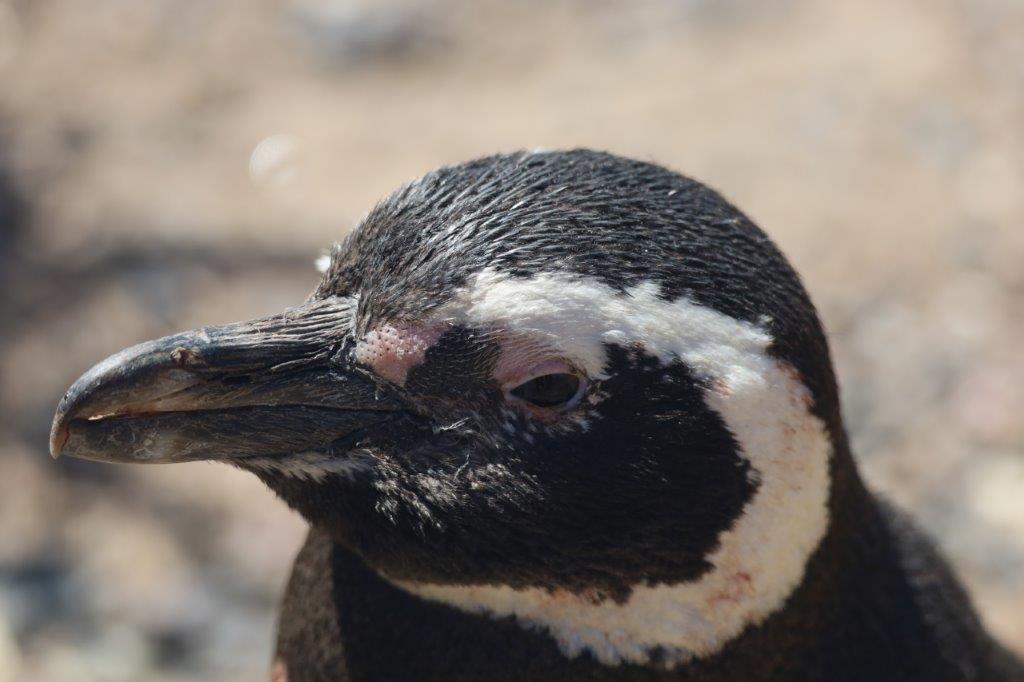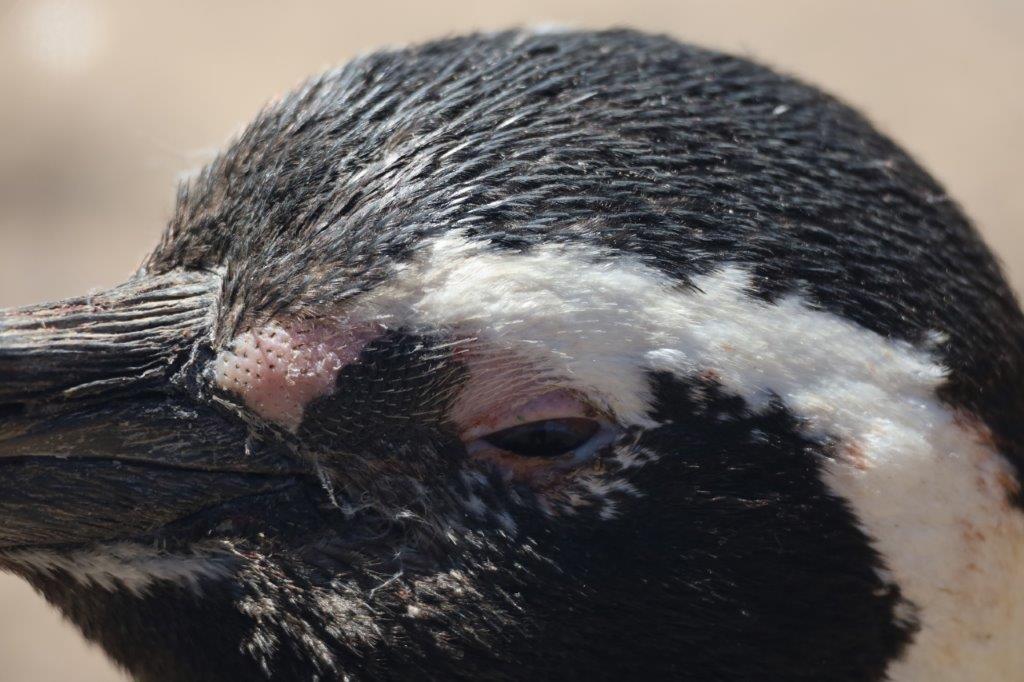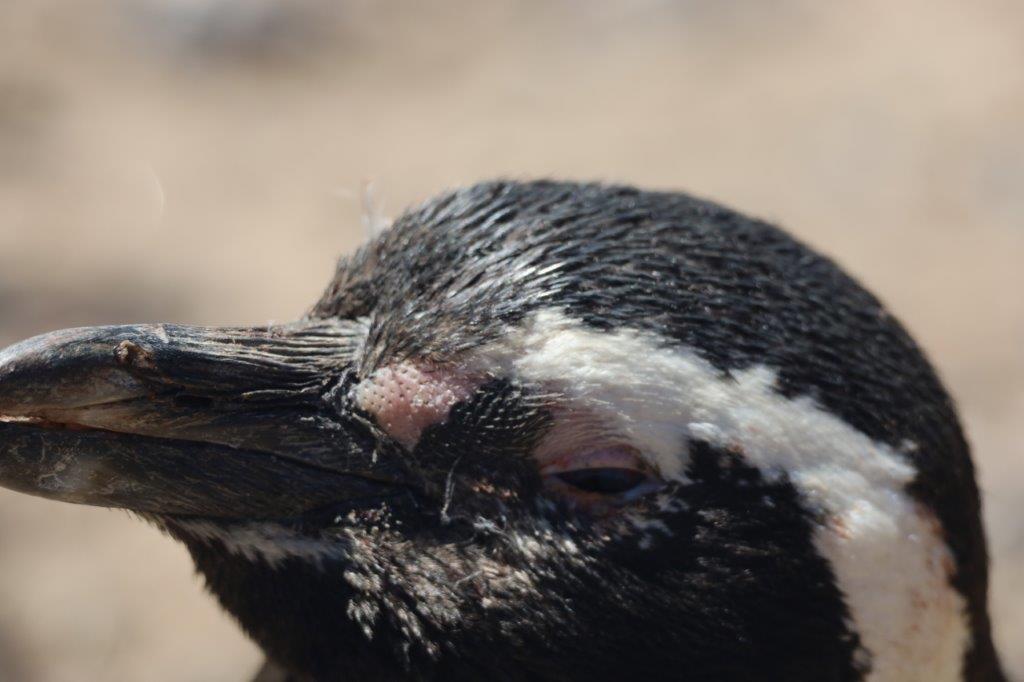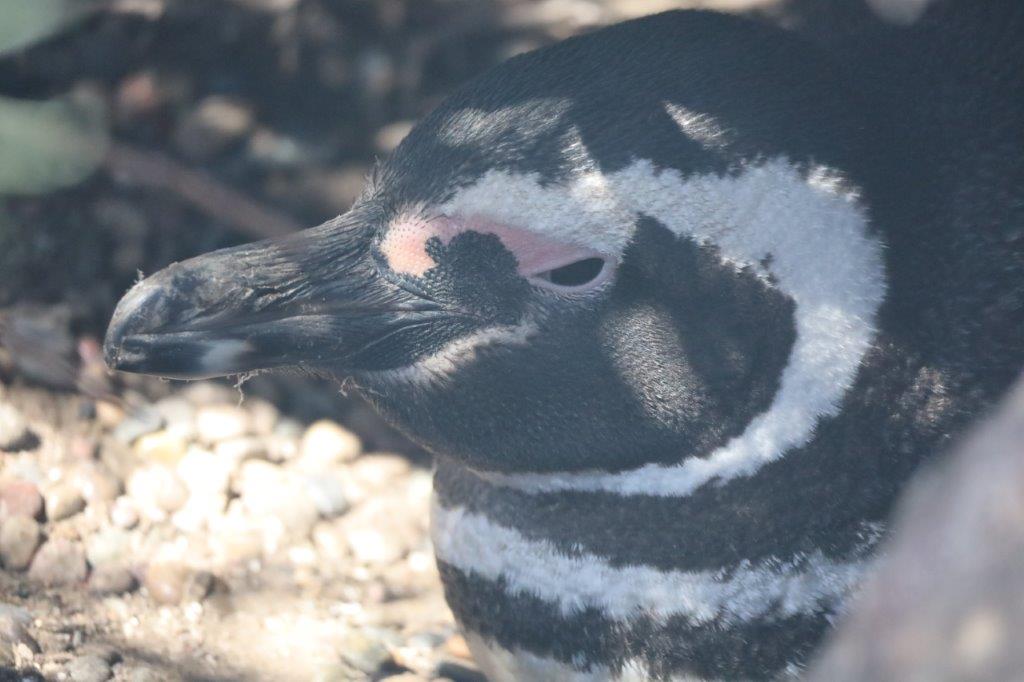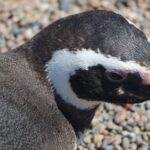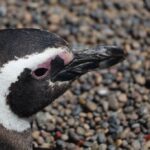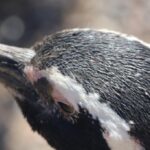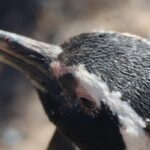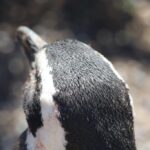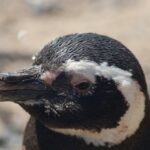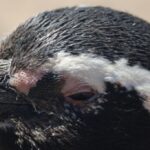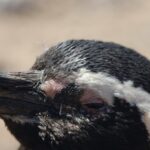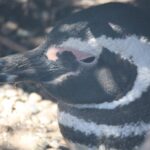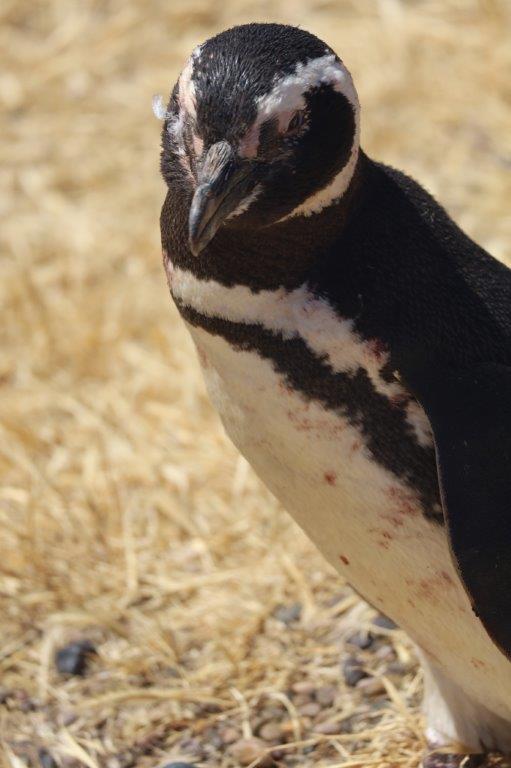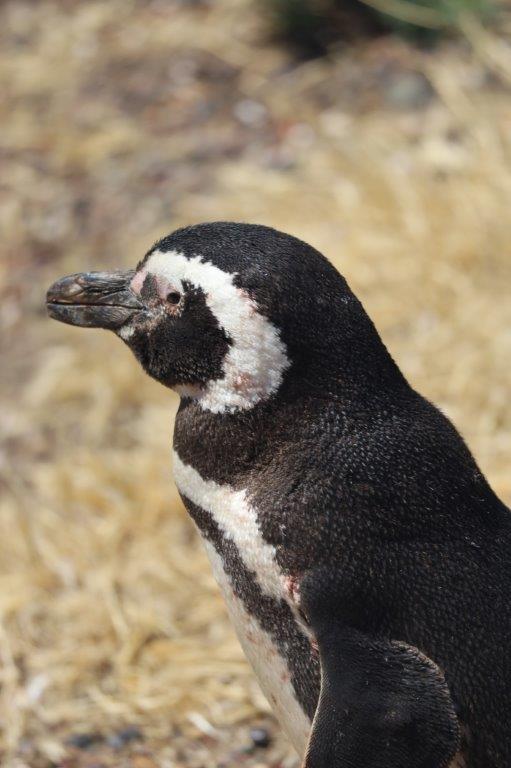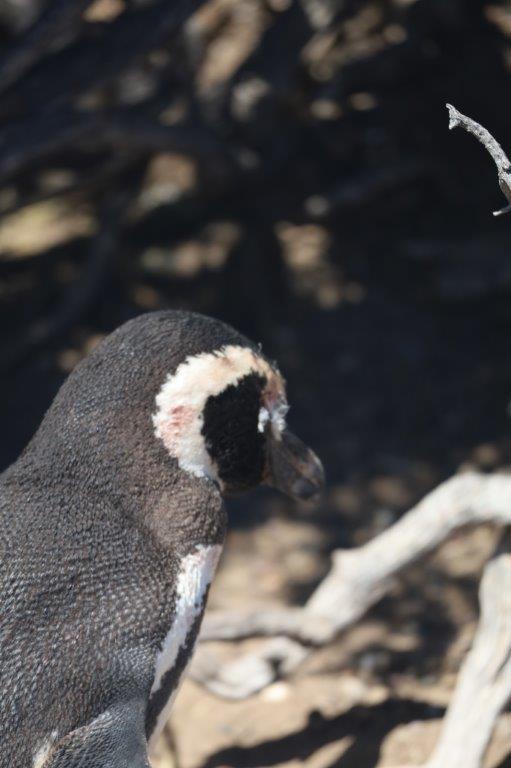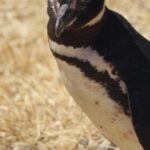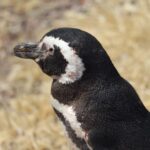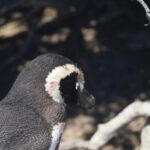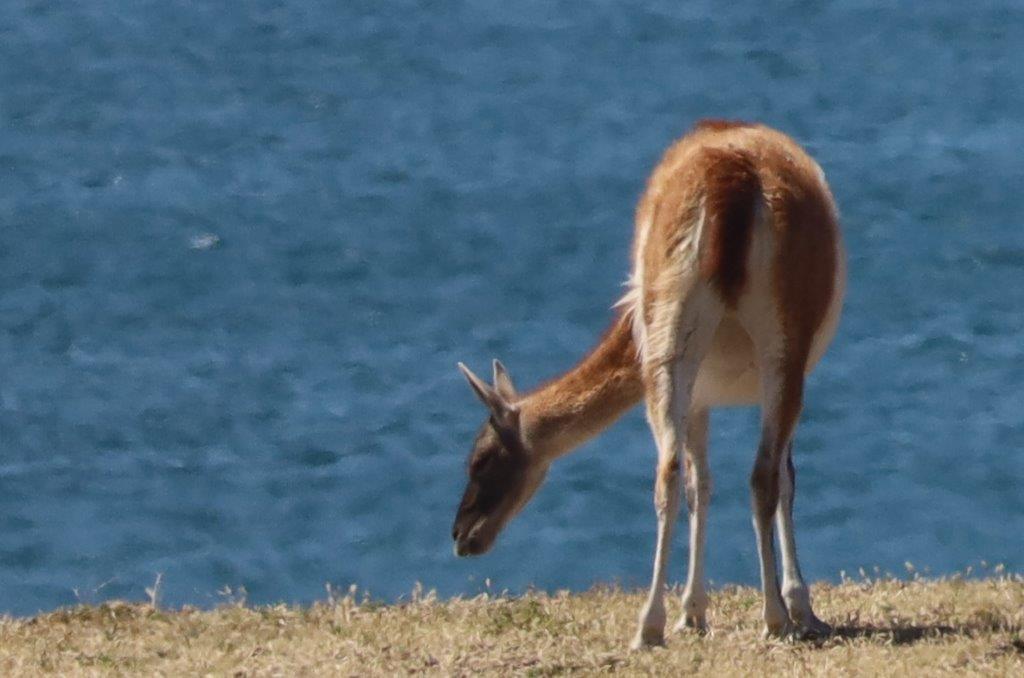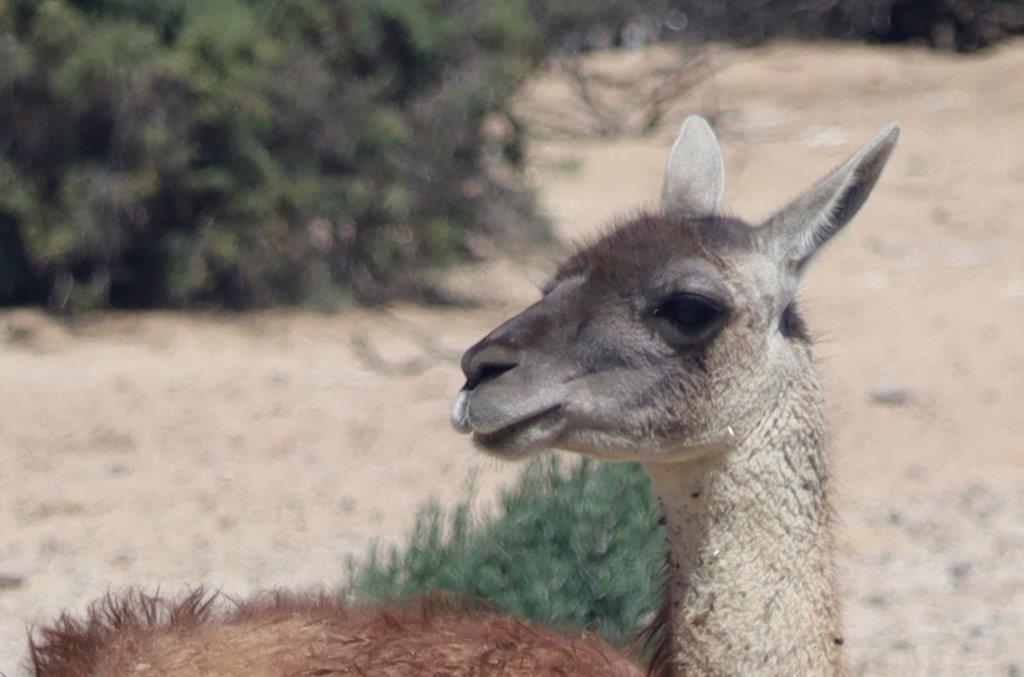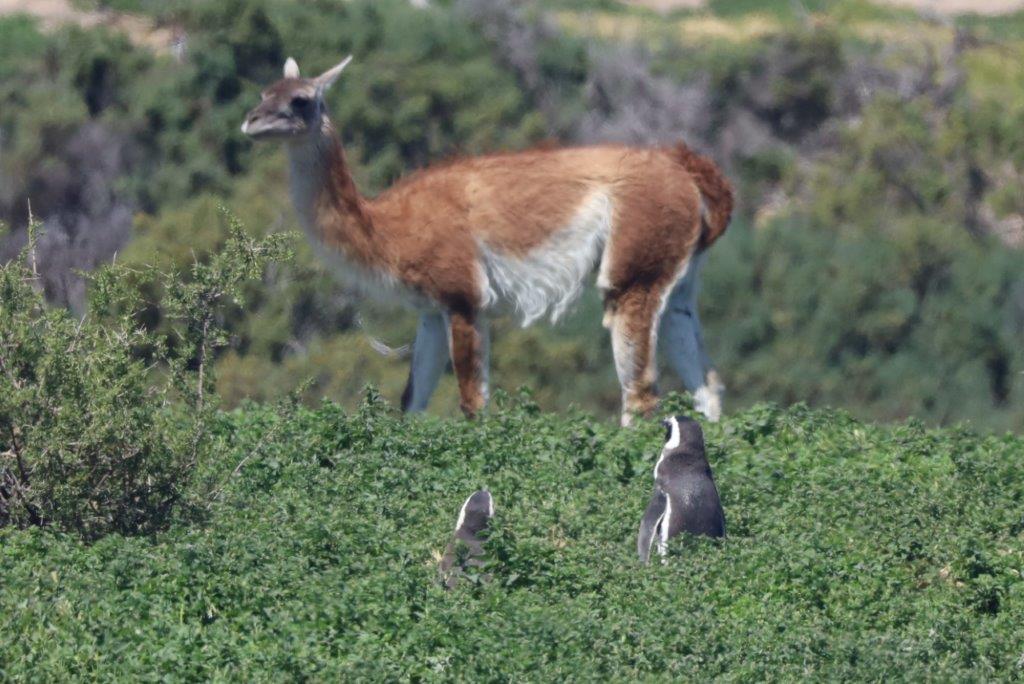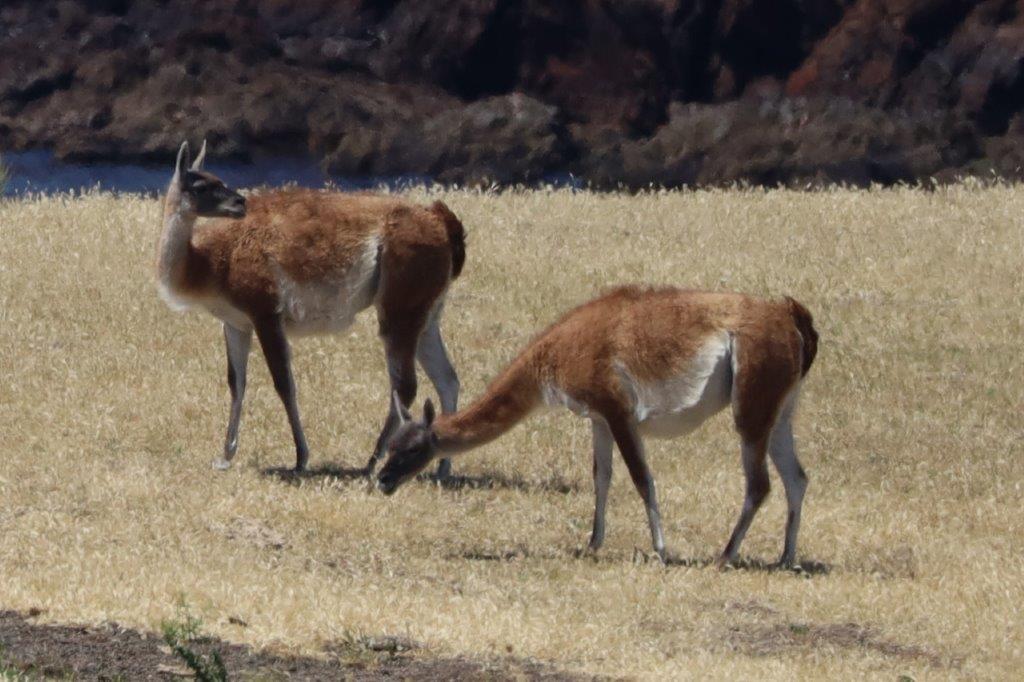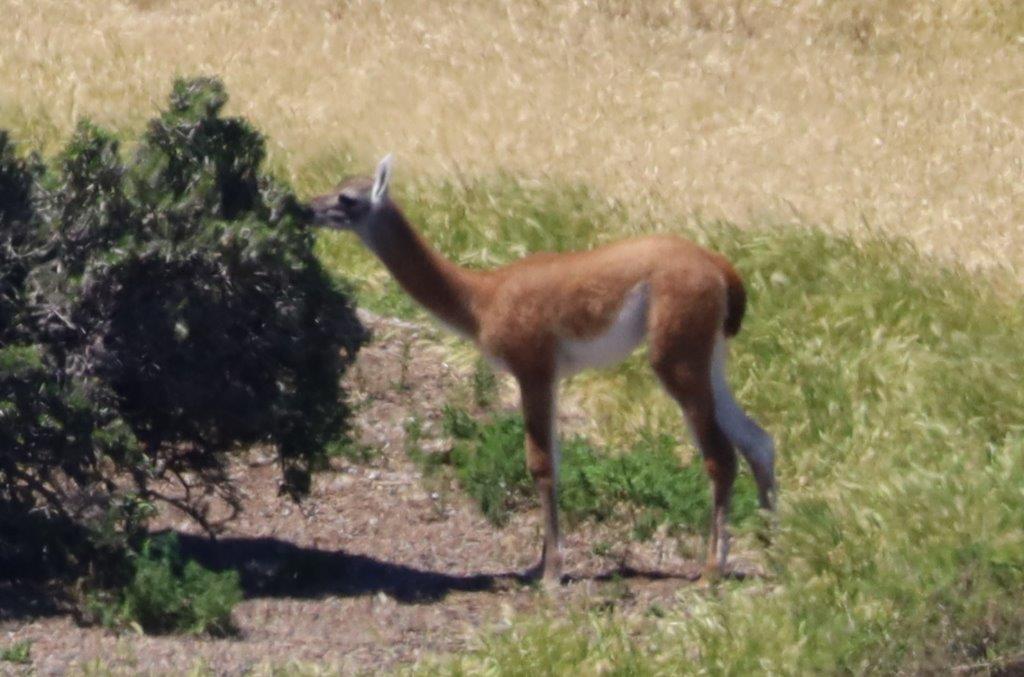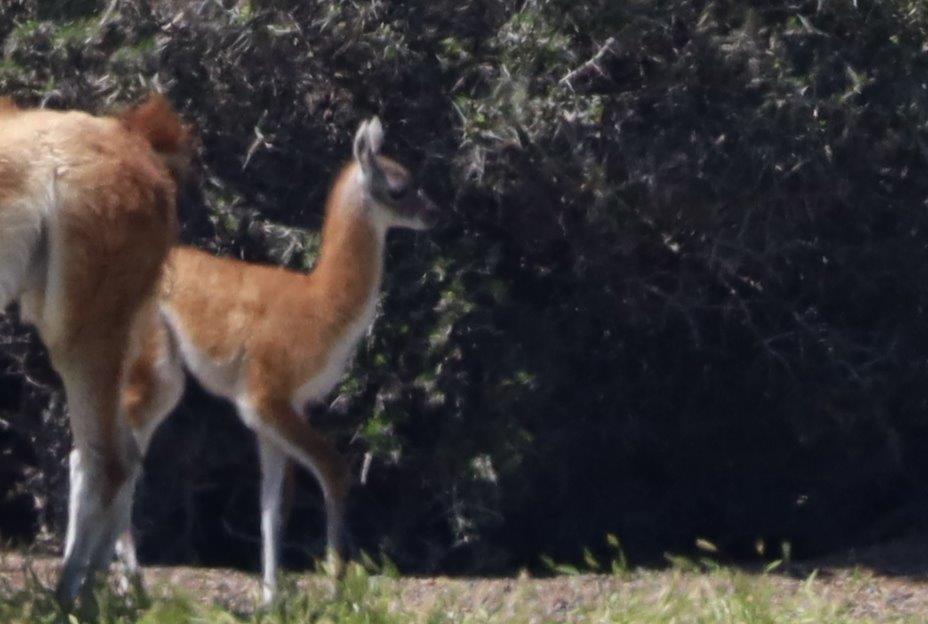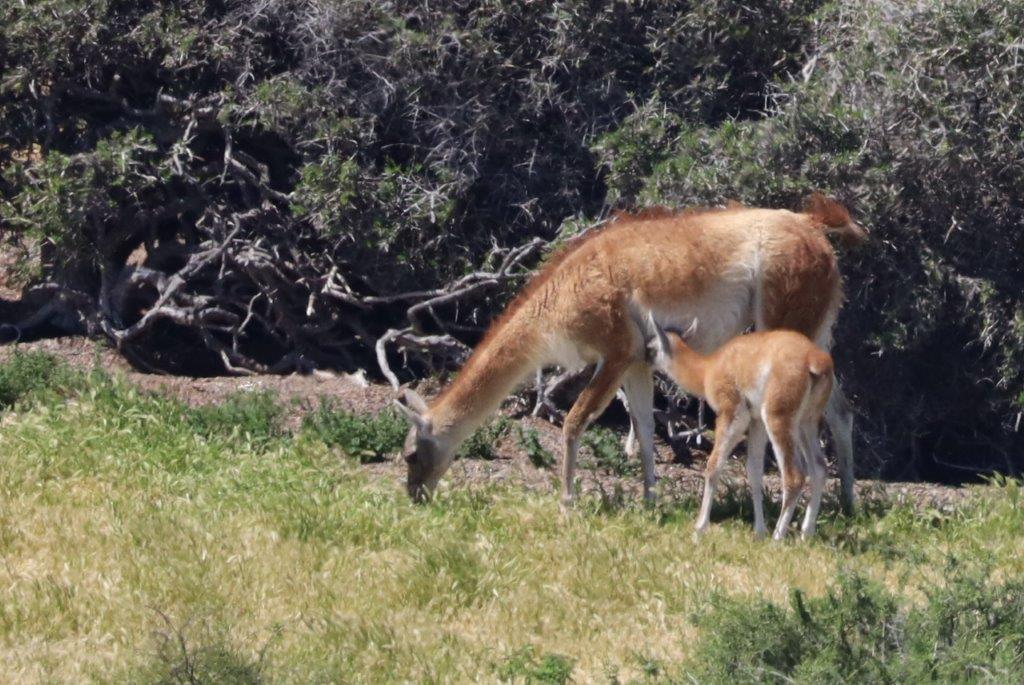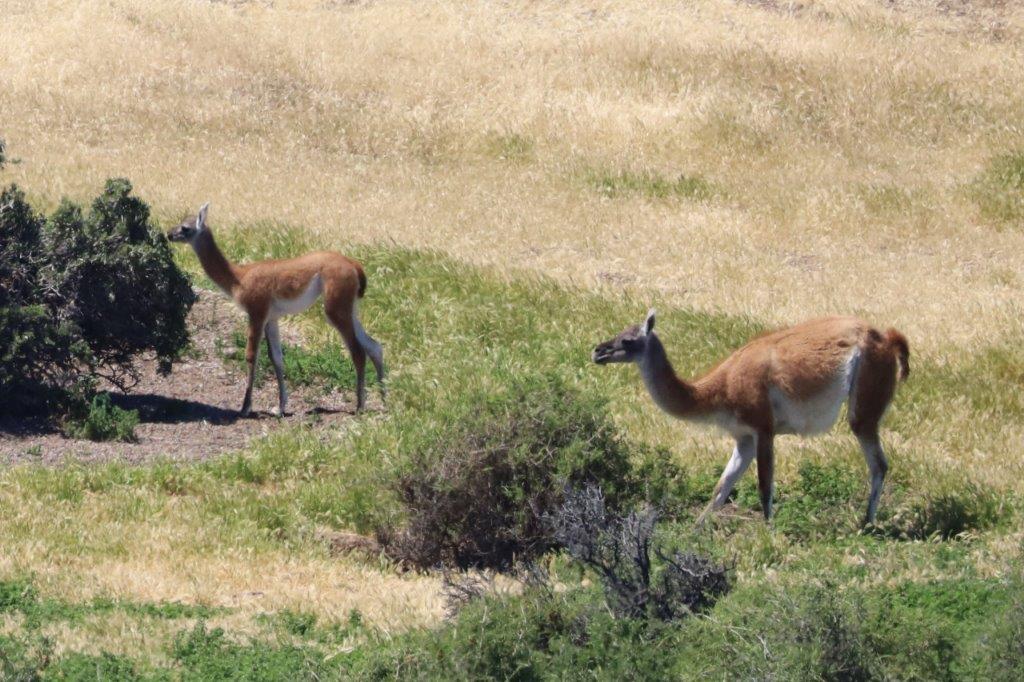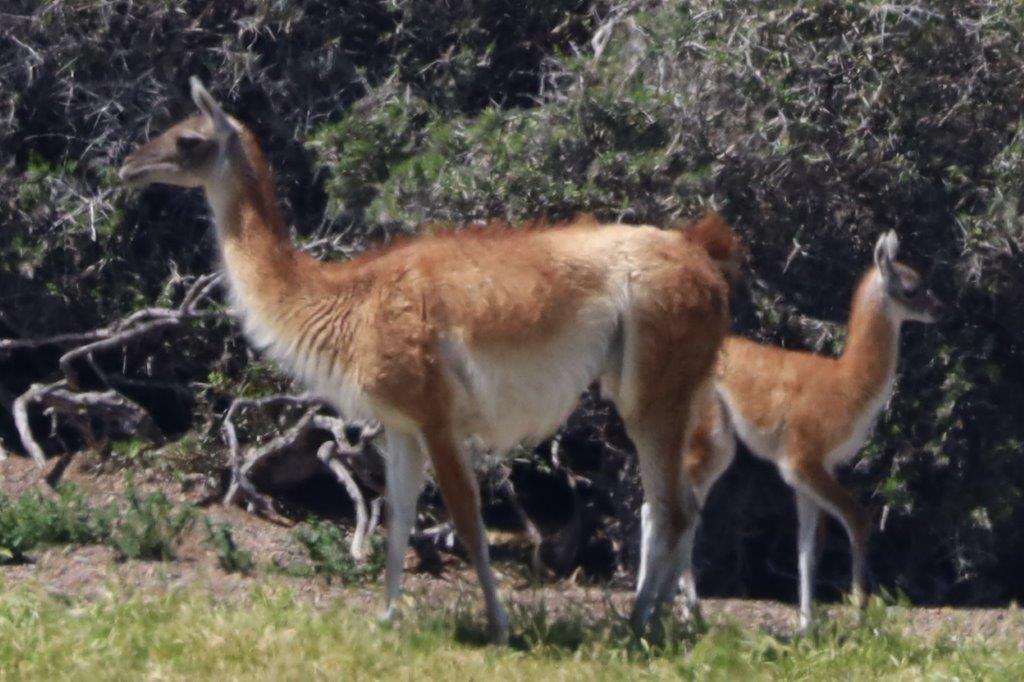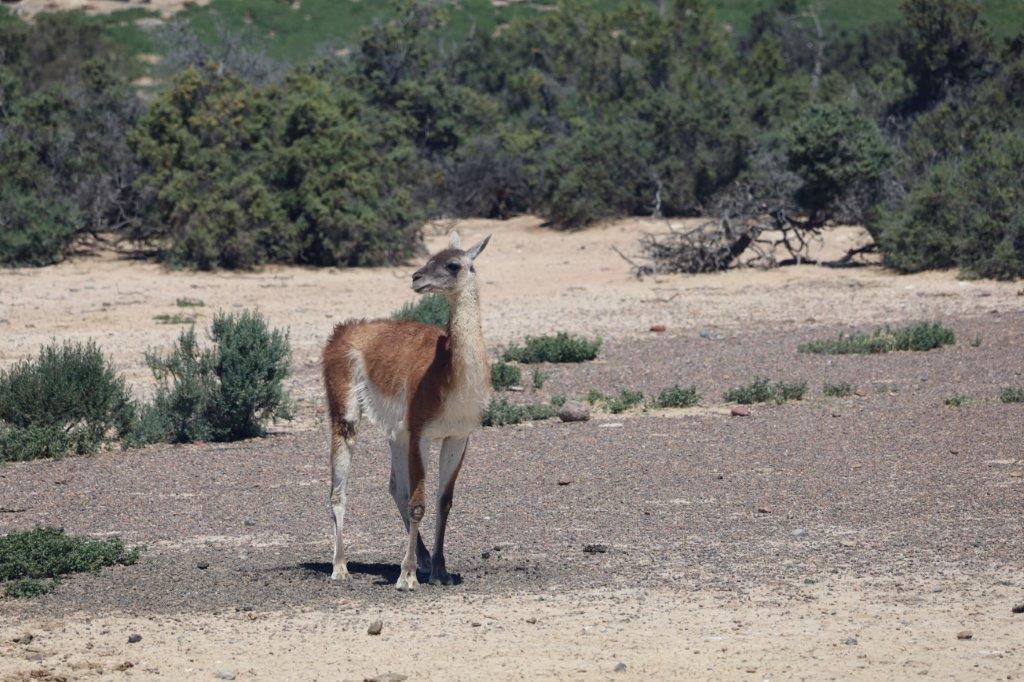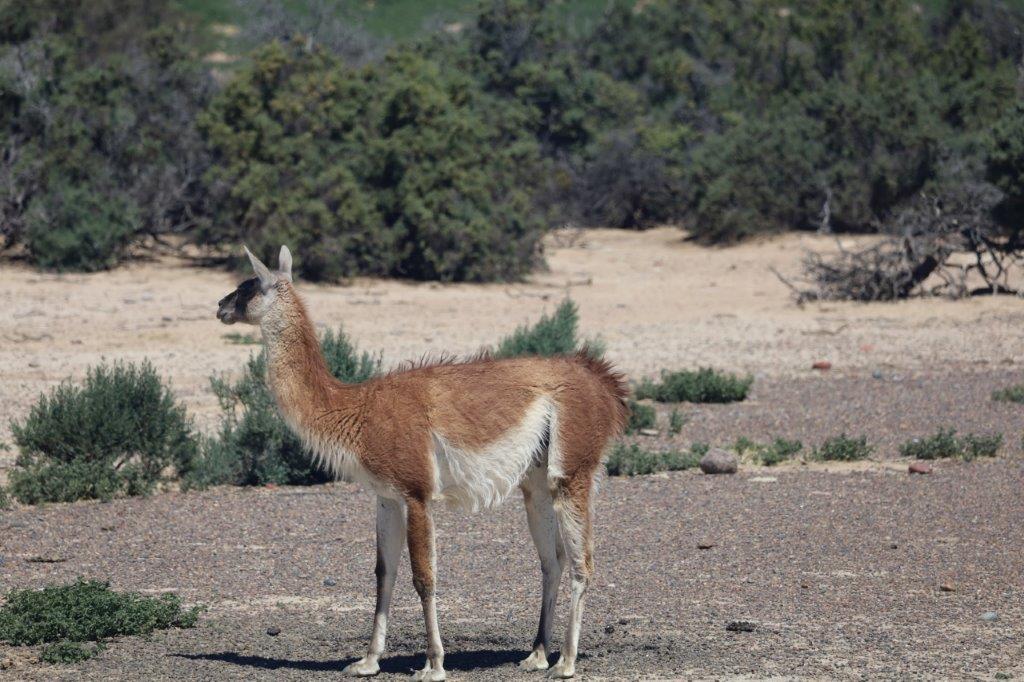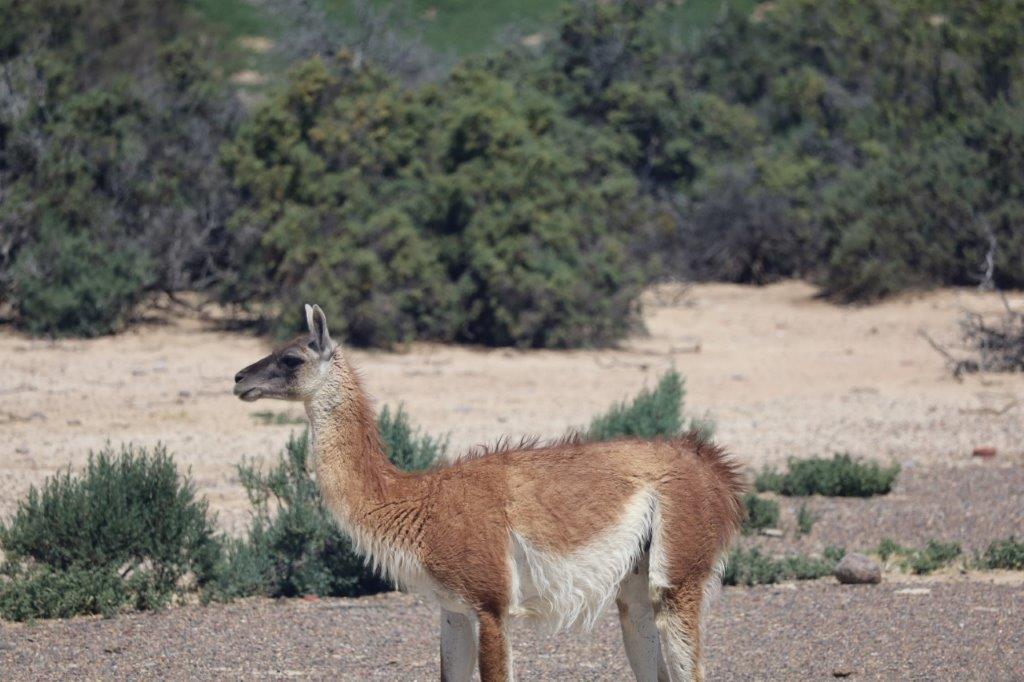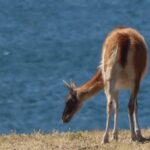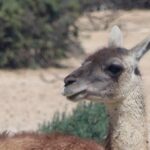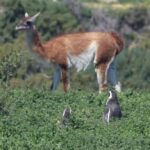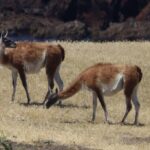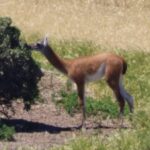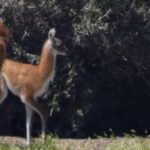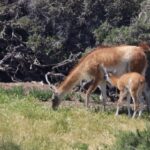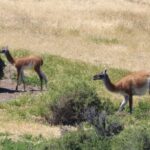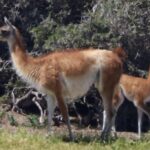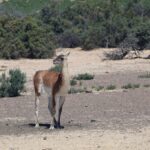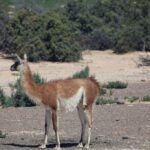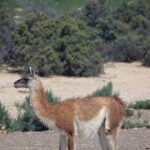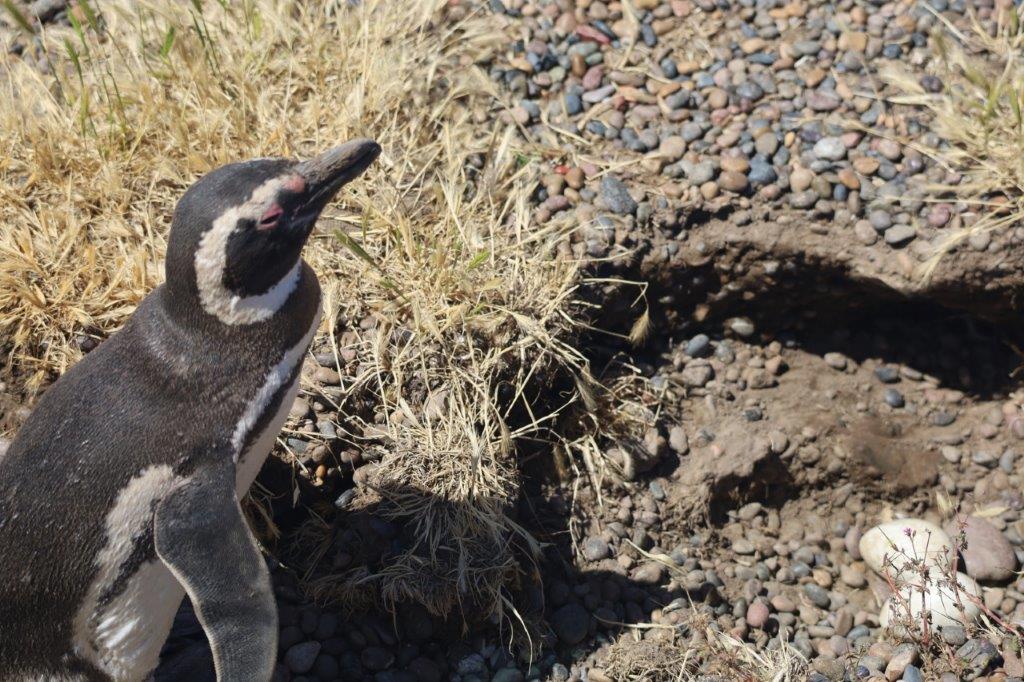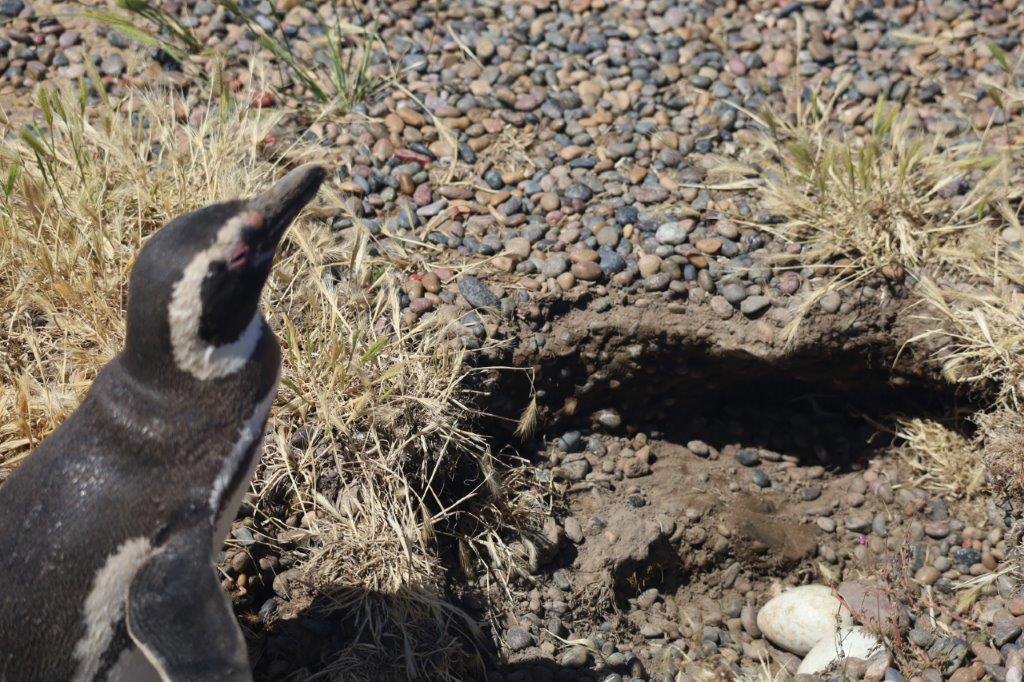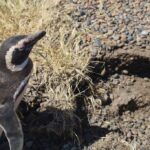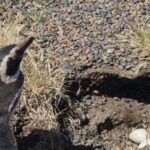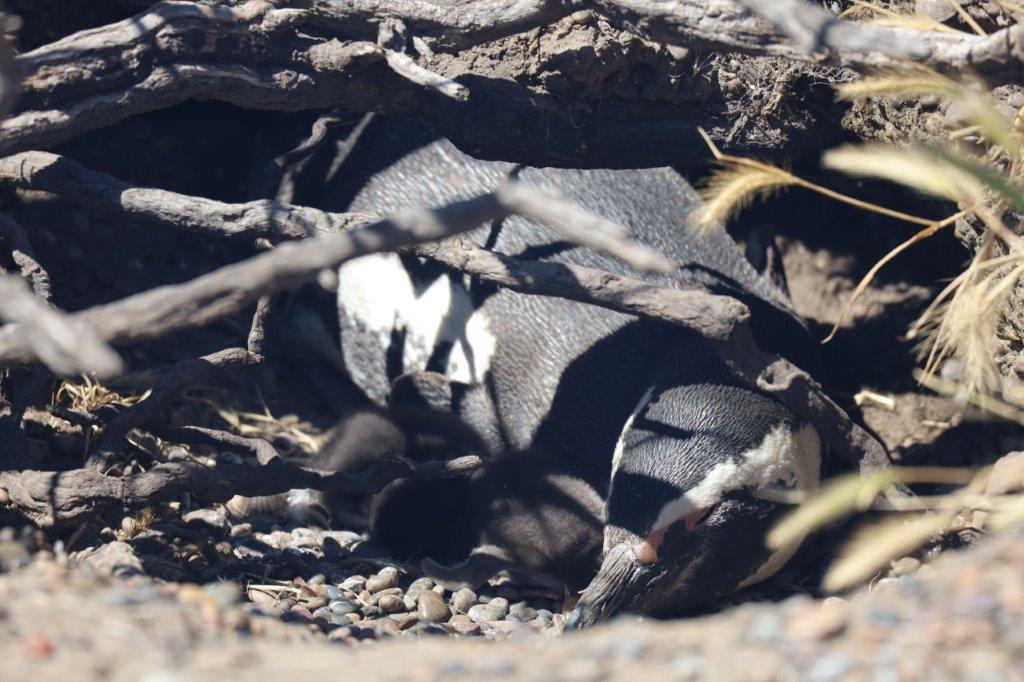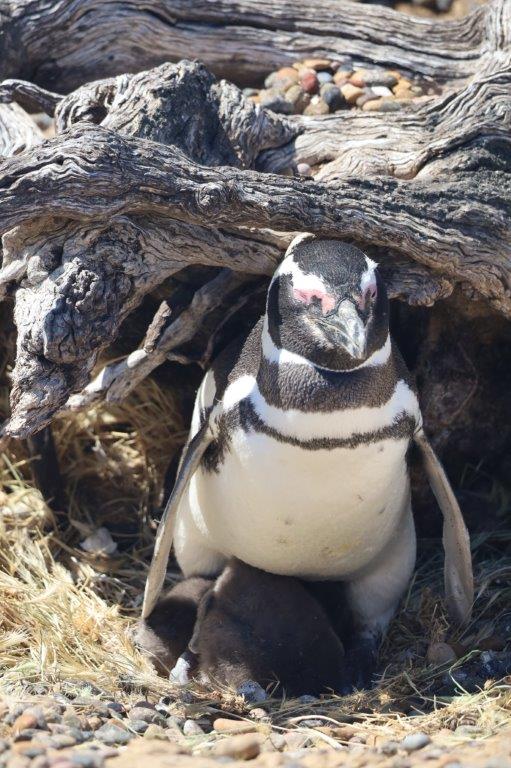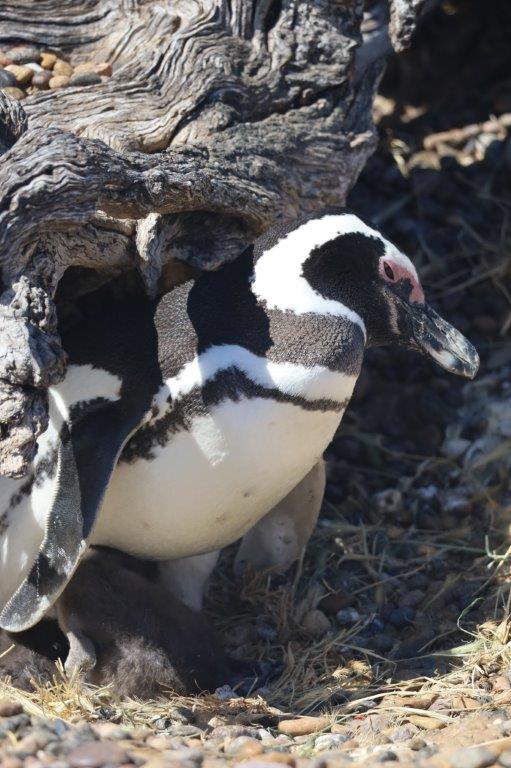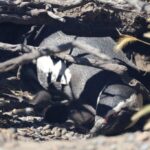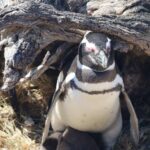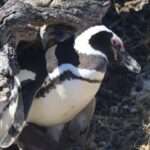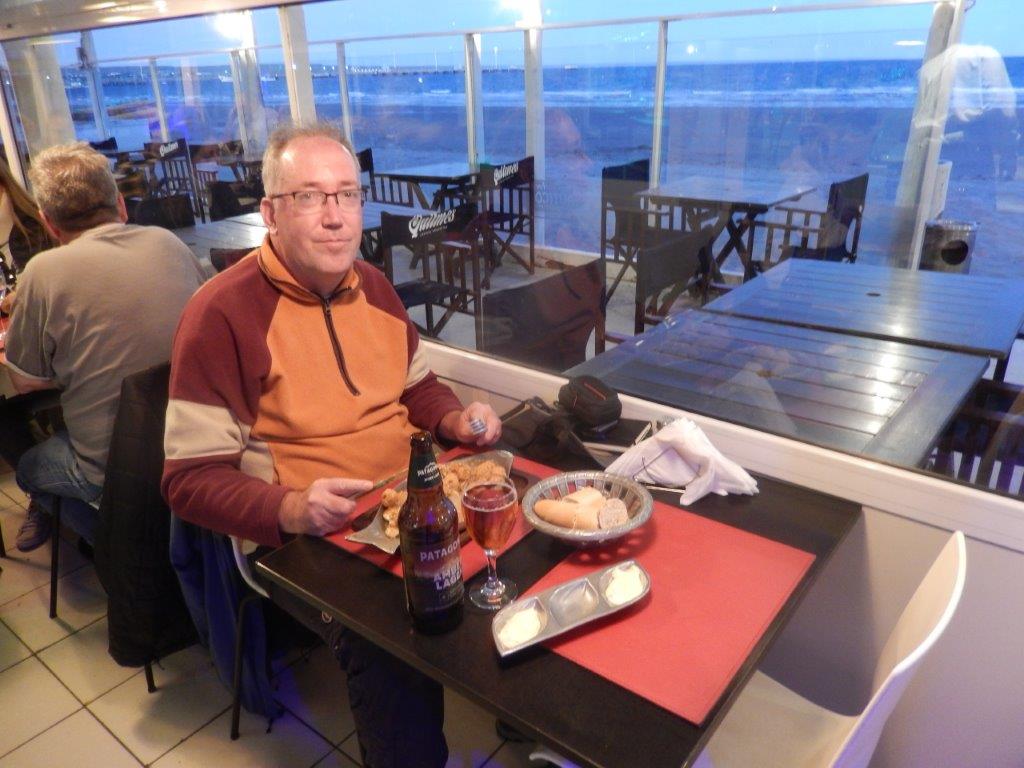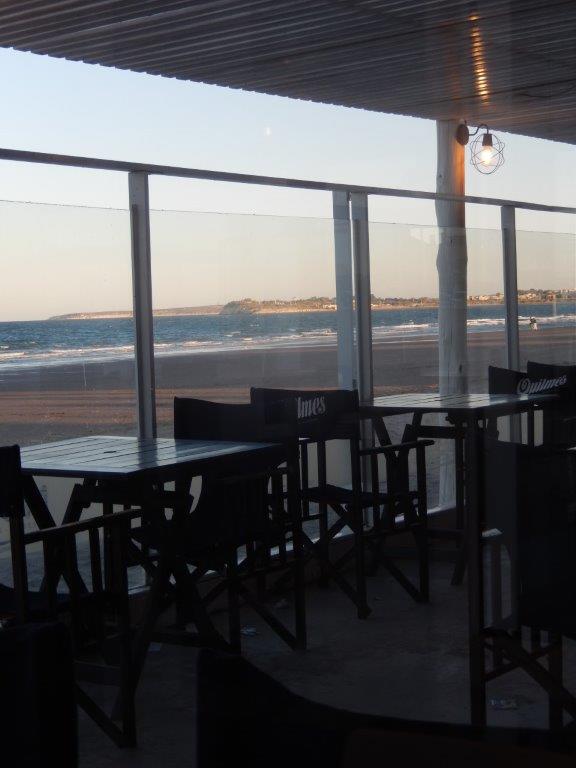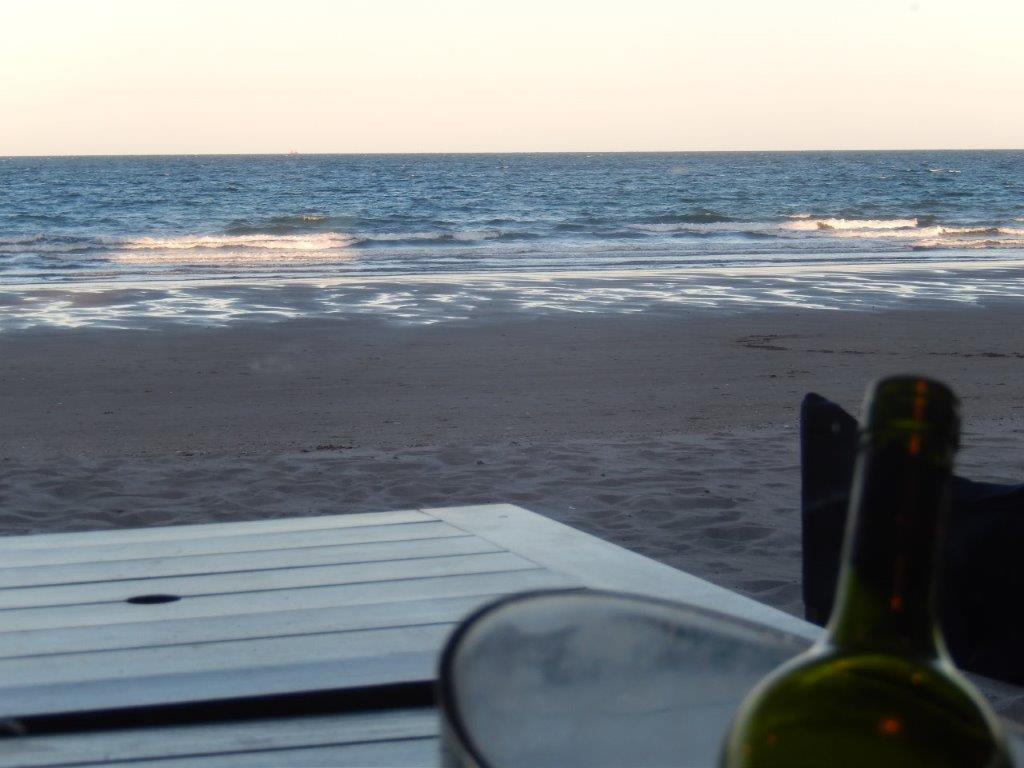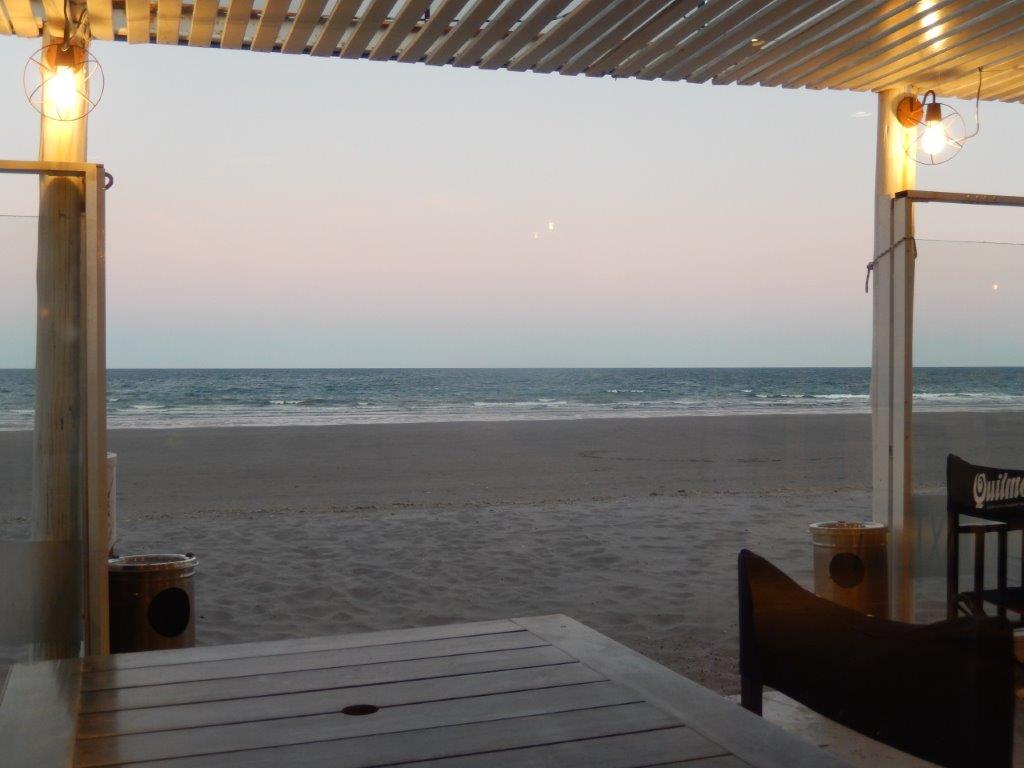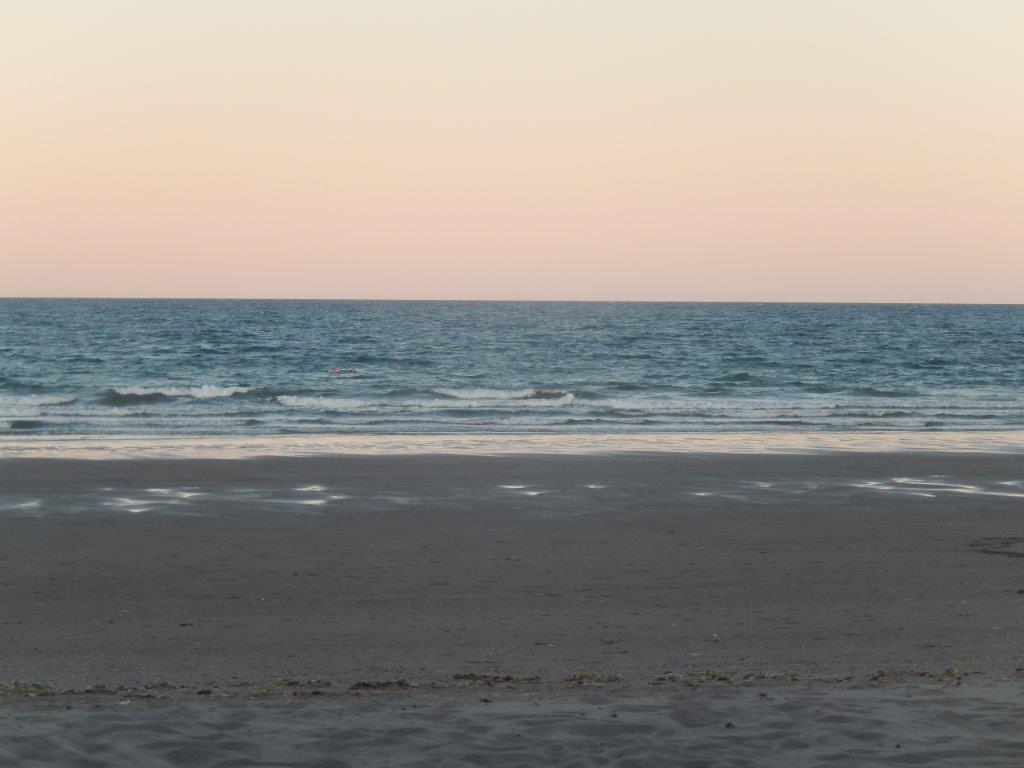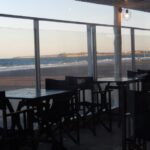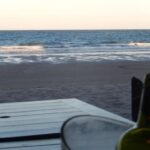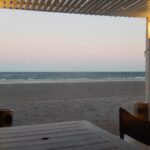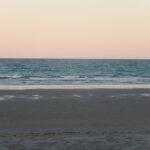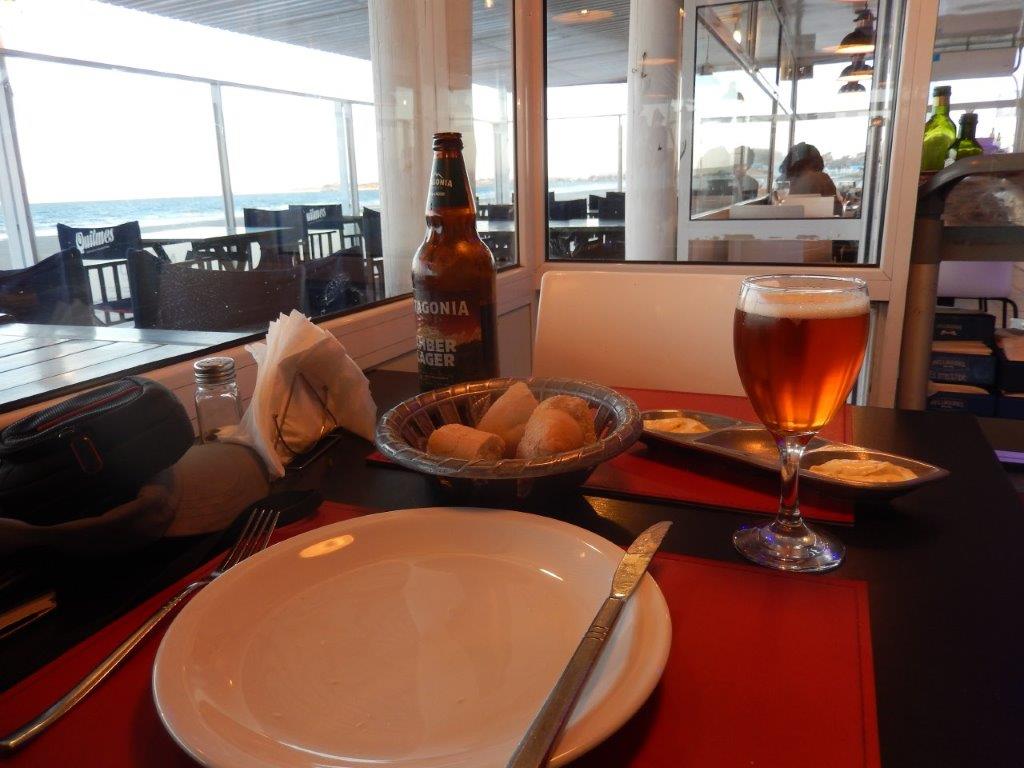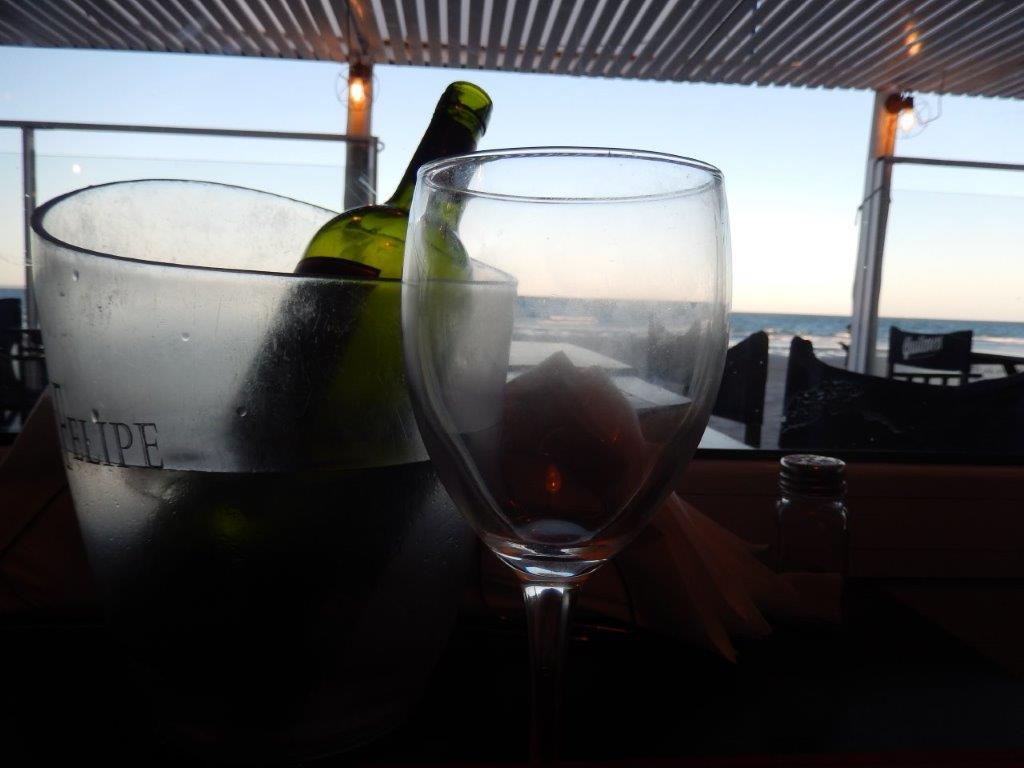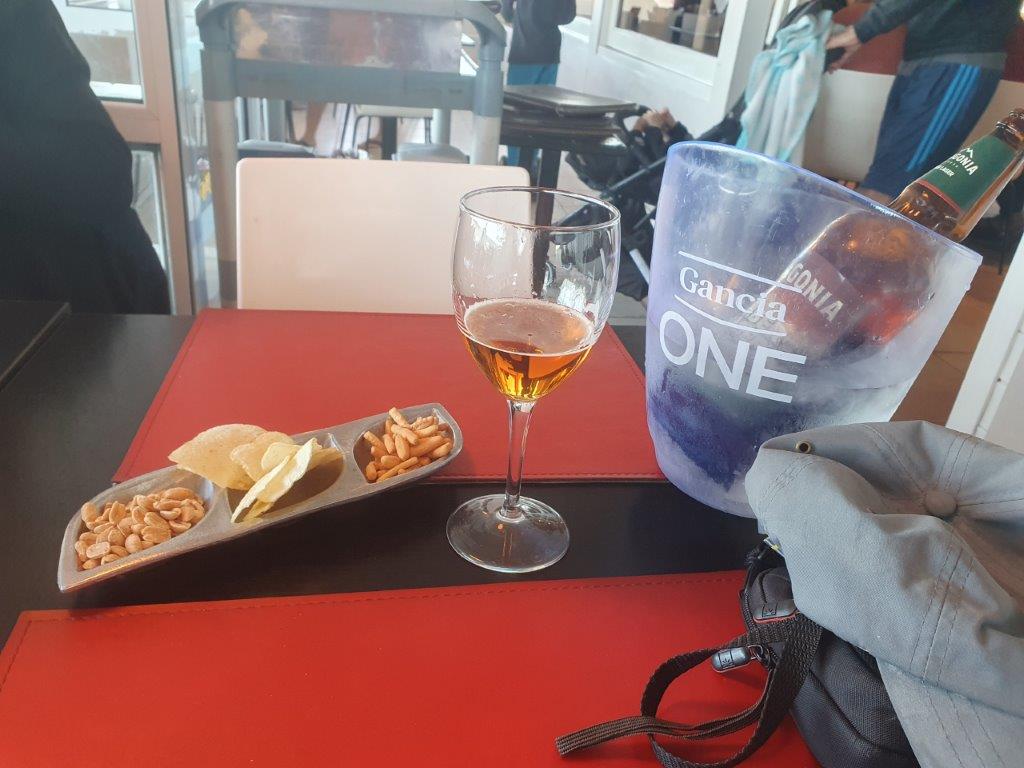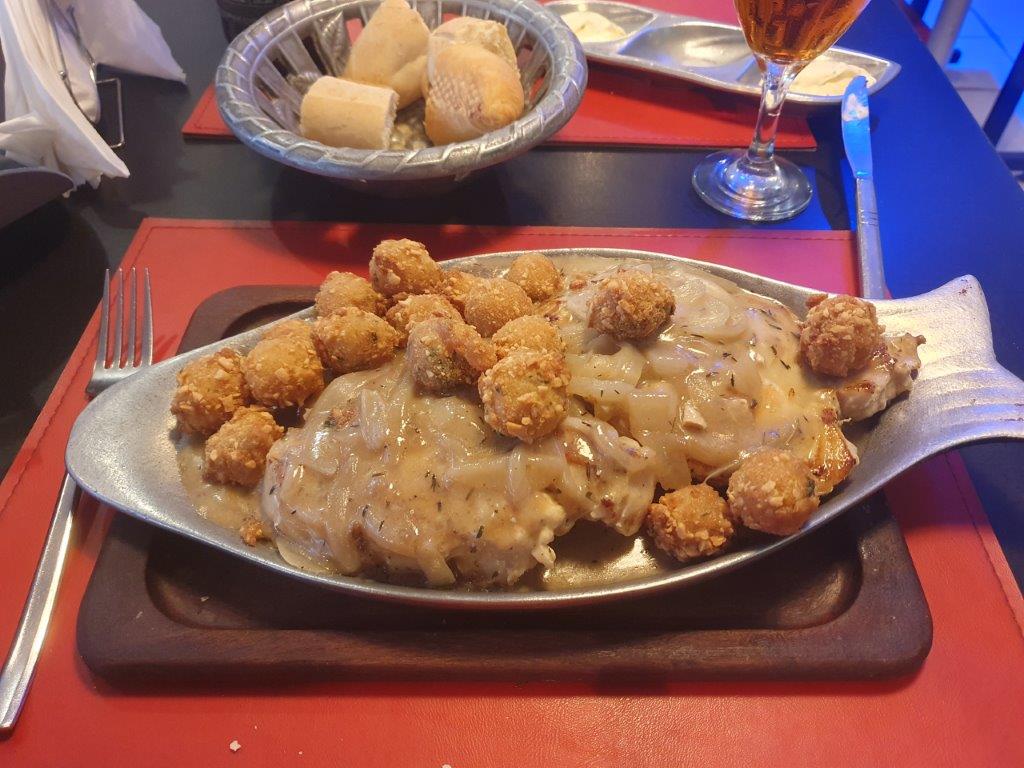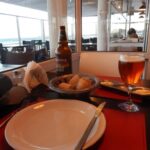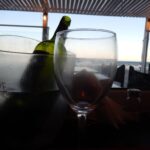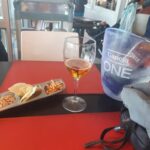6. Argentina: Magellanic Penguins at Punta Tombo peninsula (Punta Tombo Nature Reserve)
After a good night’s rest and an early breakfast, The Wandelgek drove south by bus, via Trelew to:
The Punta Tombo National Reserve
Punta Tombo National Reserve (approximately 165 kilometers/102 miles) south of Puerto Madryn) is a long, narrow peninsula on Argentina’s central coast. It’s known for its vast colony of Magellanic penguins. Actually it is the largest colony of Magellanic penguins in the world.
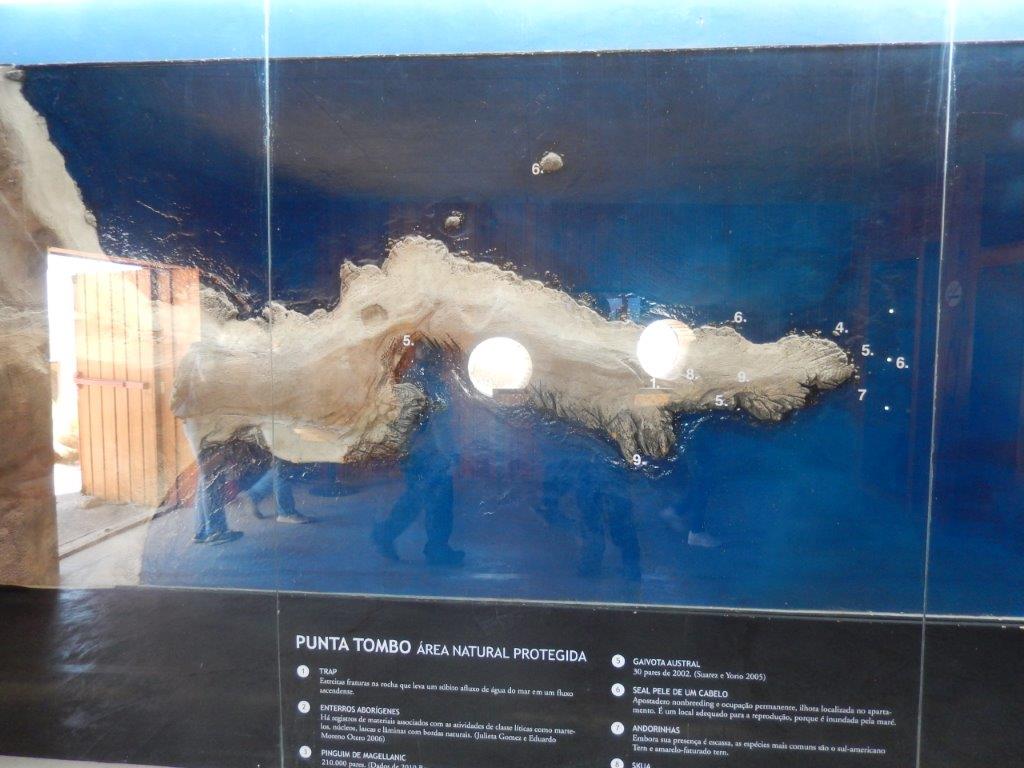 The penguins arrive in September and stay until March. Trails and boardwalks weave across the arid, gravelly terrain, which is full of small shrubs and burrows where the penguins nest.
The penguins arrive in September and stay until March. Trails and boardwalks weave across the arid, gravelly terrain, which is full of small shrubs and burrows where the penguins nest.
Other inhabitants here include Patagonian hares, foxes, guanacos, gulls and cormorants. Dolphins and whales swim offshore.
The Magellanic penguin (Spheniscus magellanicus) is a South American penguin, breeding in coastal Patagonia, including Argentina, Chile, and the Falkland Islands, with some migrating to Brazil and Uruguay, where they are occasionally seen as far north as Espirito Santo. Vagrants have been found in El Salvador, the Avian Island in Antarctica, Australia, and New Zealand. It is the most numerous of the Spheniscus banded penguins. Its nearest relatives are the African penguin, the Humboldt penguin, and the Galápagos penguins. The Magellanic penguin was named after Portuguese explorer Ferdinand Magellan, who spotted the birds in 1520. The species is listed as being of Least Concern by the IUCN.
In this colony it is possible to walk among thousands of penguins as they come and go along well defined paths towards or from the ocean or their nest, where they fish near the coast for their meals. As a visitor you are allowed to walk on wooden board trails.
If this information regarding penguins makes you dizzy in the head than take a short break before reading any further…because it gets much worse🤣
There are at least 17 different types of penguin and The Wandelgek visited the visitor center and its beautiful exhibition to learn a bit more about these penguin types, before walking completely clueless through the area.
After the visitor center’s The Wandelgek began his walk on wooden tracks through the penguin colony. It was, in some way, a similar experience as my visit to the most northern penguin colony in the world at Boulders Beach in South Africa:
Seek the difference:
The Magellanic penguins have approximately the same size and height as the Jackass penguins.
Left is an African or Jackass penguin, right is a Magellanic penguin. Do you see the difference?
Answer: Magellanic penguins (Spheniscus magellanicus) look very similar to African penguins, but they have a dark black neck/throat stripe (front) which distinguishes them from their African cousins.
There were tons of magelanic penguins to observe:
There were also guanacos, related the Llama and the Alpaca which both live much further north and which are less equiped to live in areas where there is almost no fresh water.
The guanaco (Lama guanicoe) is a camelid native to South America, closely related to the llama. Guanacos are one of two wild South American camelids, the other being the vicuña, which lives at higher elevations. It also spits when angry or irritated.
Enjoy these pictures of penguins, more penguins, even more penguins, most penguins, penguin overkill alert beep, beep, beep, aaah a guanaco …
It was late Spring overhere (late November) and the penguins had been mating in early Spring and were all either taking care of their eggs or of the newborn younglings. The Wandelgek managed to take some pictures of those as well, which means you need to keep your eyes and ears wide open and be attentive to each and every penguin which is not moving around, but sits still on top of a nest, preferably under the cover of a bush. Tips from other visitors who sighted penguins with eggs or younglings will also do the trick ;-).
Magellanic penguins travel in large groups when hunting for food. In the breeding season, these birds gather in large nesting colonies at the coasts of Argentina, southern Chile, and the Falkland Islands, which have a density of 20 nests per 100 m2. The breeding season begins with the arrival of adult Magellanic penguins at the breeding colonies in September and extends into late February and March when the chicks are mature enough to leave the colonies. One of the largest of these colonies is located at Punta Tombo. Nests are built under bushes or in burrows. Two eggs are laid. Incubation lasts 39–42 days, a task which the parents share in 10- to 15-day shifts. The chicks are cared for by both parents for 29 days and are fed every two to three days. Normally, both are raised through adulthood, though occasionally only one chick is raised. A successful Magellanic is considered to be able to raise 0.7 chicks on average per breeding season.
Magellanic penguins lay eggs in warm places where the temperature remains over 20 °C.
The male and female penguins take turns hatching, as they forage far away from their nests. The males return from the sea on the day the second egg is laid to take their turn incubating The second eggs are generally larger and with higher temperature than the first egg. The first one is more likely to survive, but under some conditions both chicks may be raised successfully. Male and female Magellanic penguins overlap in the at-sea areas they use whilst foraging, and show only small difference in foraging behaviours during early chick-rearing.
Magellanic penguins mate with the same partner year after year. The male reclaims his burrow from the previous year and waits to reconnect with his female partner. The females are able to recognize their mates through their call alone.
Once the breeding season is complete, Magellanic penguins migrate north for the winter, where they feed in waters offshore from Peru and Brazil.
The pictures above and the movie below, show two young penguin chicks, still very small and in their grey down coat, lying against the mother penguin to keep warm, just left of the mother penguin’s head.
After a few hours of bird watching and photography, The Wandelgek drove back to Puerto Madryn. After a quick shower he went to the beach where he wznted to visi the Nautica restaurant where he had some drinks the day before on the outdoor terrace a, to have a seafood dinner…
The twilight was beautiful. Loved the views and just staring a bit out of the window towards the horizon and the rolling waves…
…and the food and beer were very good too and it was nice to have some white salmon instead of meat for a change…
After dark The Wandelgek returned to his hotel room. It had been a beautiful and sunny day. It was windy but the forecast was less wind for tomorrow when a boat trip was planned….

